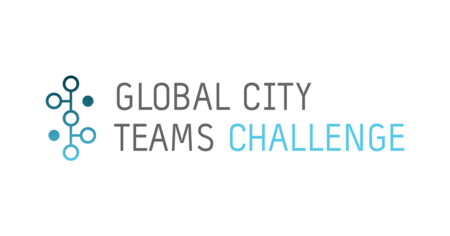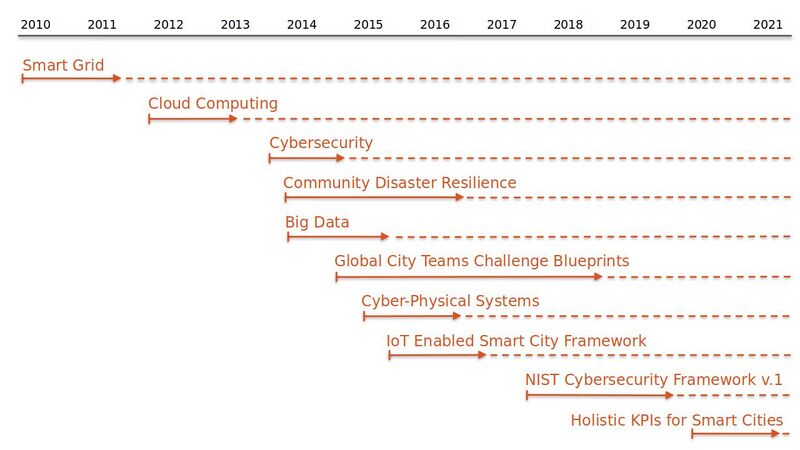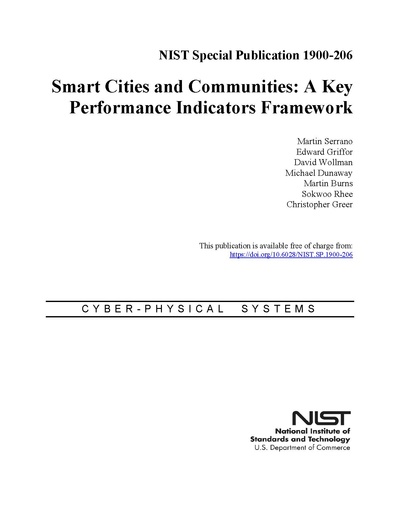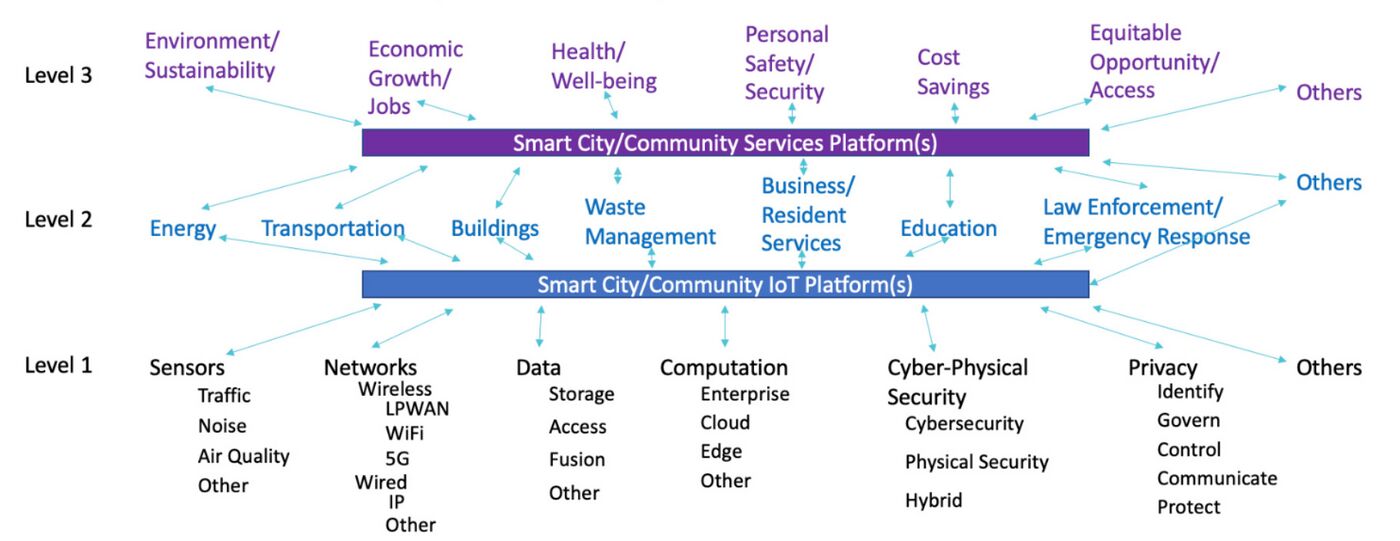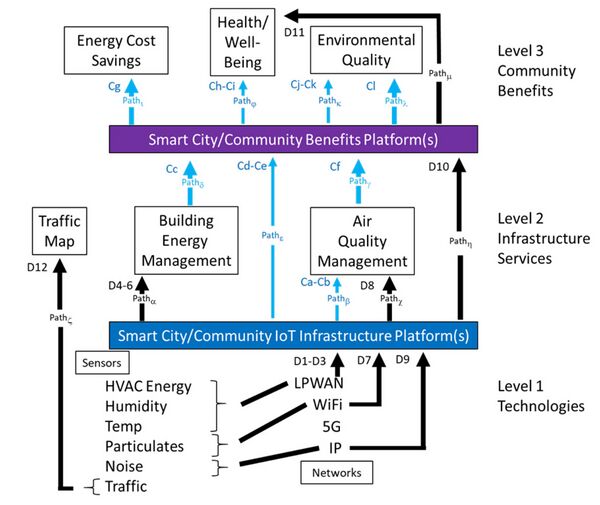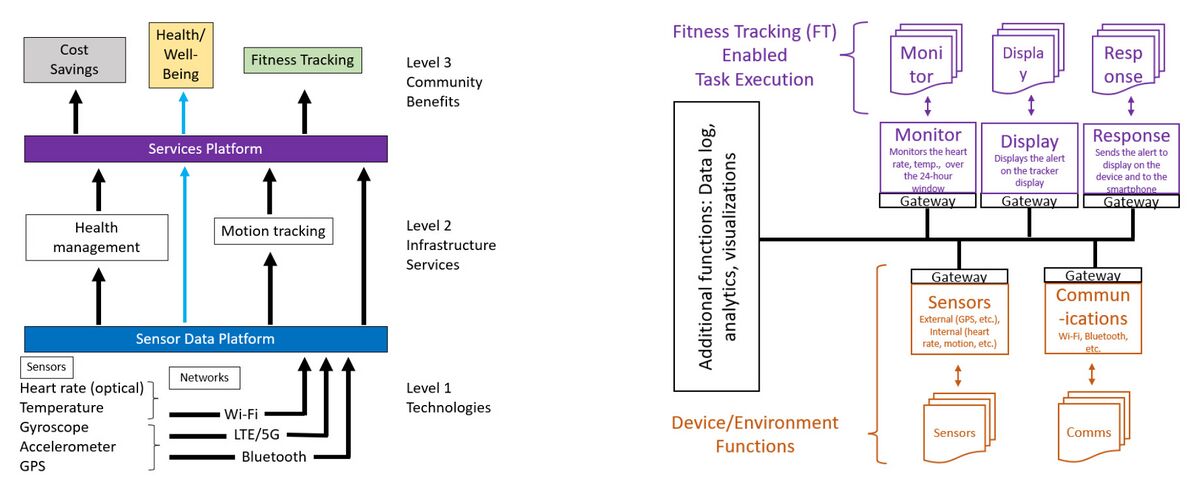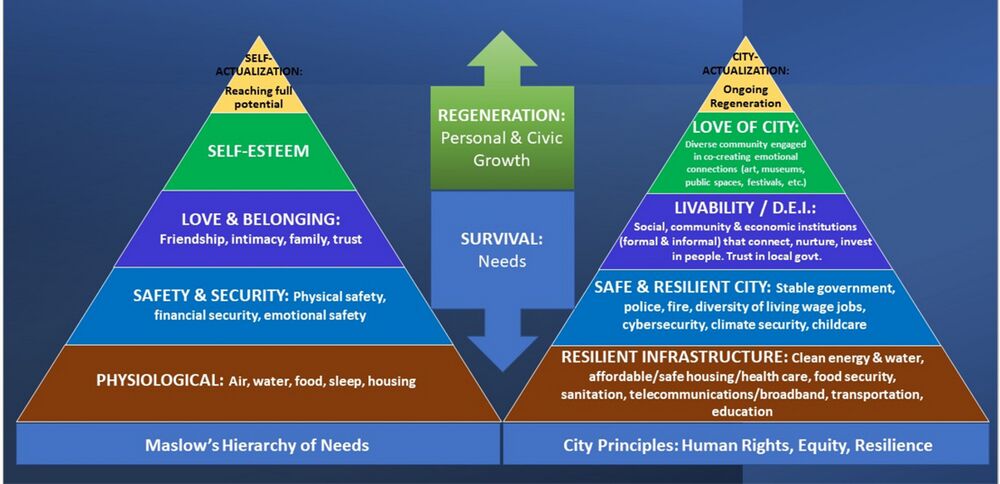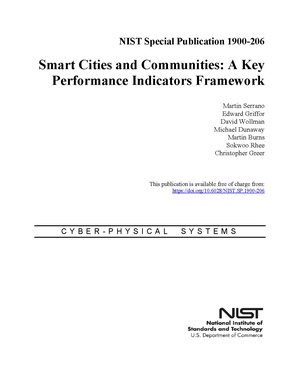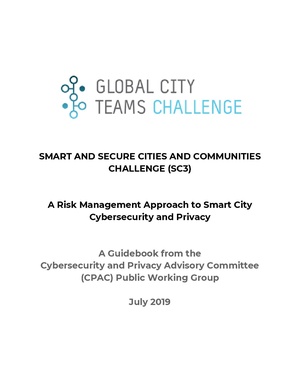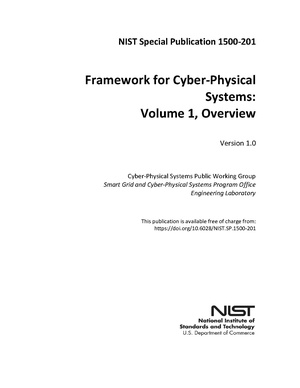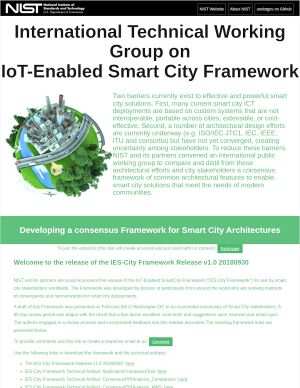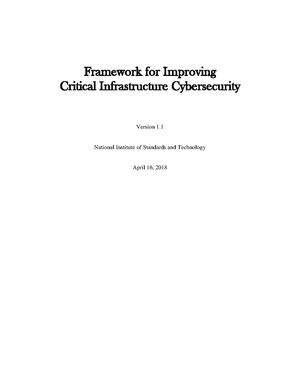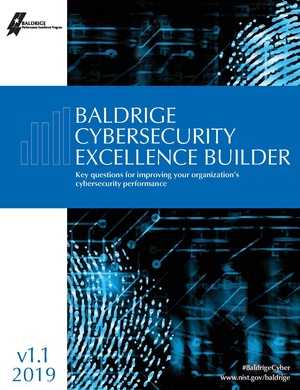The GCTC program strives to create an environment in which communities benefit through participation in Public-Private Partnerships to improve the efficiency and cost-effectiveness of community infrastructure and services, and improve residents’ overall quality of life.
The GCTC is comprised of community-focused “Action Clusters” from cities across the U.S. and the globe. Its goal is to spur collaboration among innovative local governments and agencies, nonprofits, and private companies to overcome challenges and develop solutions with leaders in the Smart City and Internet of Things (IoT) fields. This chart provides the most recent (2019) depiction of the extent of GCTC member communities, with over 150 named cities and regions identified in the central portion of the graphic.
Loading map...
{"minzoom":false,"maxzoom":false,"mappingservice":"leaflet","width":"1000px","height":"500px","centre":false,"title":"","label":"","icon":"Redpin13.png","lines":[],"polygons":[],"circles":[],"rectangles":[],"copycoords":false,"static":false,"zoom":2,"defzoom":14,"layers":["OpenStreetMap"],"image layers":[],"overlays":[],"resizable":false,"fullscreen":false,"scrollwheelzoom":true,"cluster":false,"clustermaxzoom":20,"clusterzoomonclick":true,"clustermaxradius":80,"clusterspiderfy":true,"geojson":"","clicktarget":"","imageLayers":[],"locations":[{"text":"","title":"","link":"","lat":53.8687751,"lon":10.6713232,"icon":"/images/0/02/Redpin13.png"},{"text":"\u003Cb\u003E\u003Cdiv class=\"mw-parser-output\"\u003E\u003Cp\u003ECity of Abuja Nigeria\n\u003C/p\u003E\u003C/div\u003E\u003C/b\u003E\u003Cdiv class=\"mw-parser-output\"\u003E\u003Cp\u003EThe City of \u003Ca href=\"/Abuja_Nigeria\" title=\"Abuja Nigeria\"\u003EAbuja Nigeria\u003C/a\u003E has a population of 1235880 people\n\u003C/p\u003E\u003C/div\u003E","title":"City of Abuja Nigeria\n","link":"","lat":9.064330555555555,"lon":7.4892972222222225,"icon":"/images/0/02/Redpin13.png"},{"text":"","title":"","link":"","lat":53.8687751,"lon":10.6713232,"icon":"/images/0/02/Redpin13.png"},{"text":"\u003Cb\u003E\u003Cdiv class=\"mw-parser-output\"\u003E\u003Cp\u003ECity of Addis Ababa\n\u003C/p\u003E\u003C/div\u003E\u003C/b\u003E\u003Cdiv class=\"mw-parser-output\"\u003E\u003Cp\u003EThe City of \u003Ca href=\"/Addis_Ababa\" title=\"Addis Ababa\"\u003EAddis Ababa\u003C/a\u003E has a population of 3384569 people\n\u003C/p\u003E\u003C/div\u003E","title":"City of Addis Ababa\n","link":"","lat":9.035827777777778,"lon":38.75241388888889,"icon":"/images/0/02/Redpin13.png"},{"text":"","title":"","link":"","lat":53.8687751,"lon":10.6713232,"icon":"/images/0/02/Redpin13.png"},{"text":"\u003Cb\u003E\u003Cdiv class=\"mw-parser-output\"\u003E\u003Cp\u003ECounty of Alameda County CA\n\u003C/p\u003E\u003C/div\u003E\u003C/b\u003E\u003Cdiv class=\"mw-parser-output\"\u003E\u003Cp\u003EThe County of \u003Ca href=\"/Alameda_County_CA\" title=\"Alameda County CA\"\u003EAlameda County CA\u003C/a\u003E has a population of 1682353 people\n\u003C/p\u003E\u003C/div\u003E","title":"County of Alameda County CA\n","link":"","lat":37.609027777777776,"lon":-121.89914166666667,"icon":"/images/0/02/Redpin13.png"},{"text":"","title":"","link":"","lat":53.8687751,"lon":10.6713232,"icon":"/images/0/02/Redpin13.png"},{"text":"\u003Cb\u003E\u003Cdiv class=\"mw-parser-output\"\u003E\u003Cp\u003ECity of Alexandria VA\n\u003C/p\u003E\u003C/div\u003E\u003C/b\u003E\u003Cdiv class=\"mw-parser-output\"\u003E\u003Cp\u003EThe City of \u003Ca href=\"/Alexandria_VA\" title=\"Alexandria VA\"\u003EAlexandria VA\u003C/a\u003E has a population of 159467 people\n\u003C/p\u003E\u003C/div\u003E","title":"City of Alexandria VA\n","link":"","lat":33.72371388888889,"lon":-116.26732222222222,"icon":"/images/0/02/Redpin13.png"},{"text":"","title":"","link":"","lat":53.8687751,"lon":10.6713232,"icon":"/images/0/02/Redpin13.png"},{"text":"\u003Cb\u003E\u003Cdiv class=\"mw-parser-output\"\u003E\u003Cp\u003ECounty of Allegheny County PA\n\u003C/p\u003E\u003C/div\u003E\u003C/b\u003E\u003Cdiv class=\"mw-parser-output\"\u003E\u003Cp\u003EThe County of \u003Ca href=\"/Allegheny_County_PA\" title=\"Allegheny County PA\"\u003EAllegheny County PA\u003C/a\u003E has a population of 1250578 people\n\u003C/p\u003E\u003C/div\u003E","title":"County of Allegheny County PA\n","link":"","lat":40.459719444444445,"lon":-79.97604166666666,"icon":"/images/0/02/Redpin13.png"},{"text":"","title":"","link":"","lat":53.8687751,"lon":10.6713232,"icon":"/images/0/02/Redpin13.png"},{"text":"\u003Cb\u003E\u003Cdiv class=\"mw-parser-output\"\u003E\u003Cp\u003ECity of Amsterdam Netherlands\n\u003C/p\u003E\u003C/div\u003E\u003C/b\u003E\u003Cdiv class=\"mw-parser-output\"\u003E\u003Cp\u003EThe City of \u003Ca href=\"/Amsterdam_Netherlands\" title=\"Amsterdam Netherlands\"\u003EAmsterdam Netherlands\u003C/a\u003E has a population of 905234 people\n\u003C/p\u003E\u003C/div\u003E","title":"City of Amsterdam Netherlands\n","link":"","lat":52.37308055555555,"lon":4.892452777777778,"icon":"/images/0/02/Redpin13.png"},{"text":"","title":"","link":"","lat":53.8687751,"lon":10.6713232,"icon":"/images/0/02/Redpin13.png"},{"text":"\u003Cb\u003E\u003Cdiv class=\"mw-parser-output\"\u003E\u003Cp\u003ECity of Ansan Korea\n\u003C/p\u003E\u003C/div\u003E\u003C/b\u003E\u003Cdiv class=\"mw-parser-output\"\u003E\u003Cp\u003EThe City of \u003Ca href=\"/Ansan_Korea\" title=\"Ansan Korea\"\u003EAnsan Korea\u003C/a\u003E has a population of 747035 people\n\u003C/p\u003E\u003C/div\u003E","title":"City of Ansan Korea\n","link":"","lat":37.32171388888889,"lon":126.8308611111111,"icon":"/images/0/02/Redpin13.png"},{"text":"","title":"","link":"","lat":53.8687751,"lon":10.6713232,"icon":"/images/0/02/Redpin13.png"},{"text":"\u003Cb\u003E\u003Cdiv class=\"mw-parser-output\"\u003E\u003Cp\u003ECounty of Arlington County VA\n\u003C/p\u003E\u003C/div\u003E\u003C/b\u003E\u003Cdiv class=\"mw-parser-output\"\u003E\u003Cp\u003EThe County of \u003Ca href=\"/Arlington_County_VA\" title=\"Arlington County VA\"\u003EArlington County VA\u003C/a\u003E has a population of 238643 people\n\u003C/p\u003E\u003C/div\u003E","title":"County of Arlington County VA\n","link":"","lat":38.876933333333334,"lon":-77.08930833333334,"icon":"/images/0/02/Redpin13.png"},{"text":"","title":"","link":"","lat":53.8687751,"lon":10.6713232,"icon":"/images/0/02/Redpin13.png"},{"text":"\u003Cb\u003E\u003Cdiv class=\"mw-parser-output\"\u003E\u003Cp\u003ECity of Atlanta GA\n\u003C/p\u003E\u003C/div\u003E\u003C/b\u003E\u003Cdiv class=\"mw-parser-output\"\u003E\u003Cp\u003EThe City of \u003Ca href=\"/Atlanta_GA\" title=\"Atlanta GA\"\u003EAtlanta GA\u003C/a\u003E has a population of 498044 people\n\u003C/p\u003E\u003C/div\u003E","title":"City of Atlanta GA\n","link":"","lat":33.74899166666667,"lon":-84.3902638888889,"icon":"/images/0/02/Redpin13.png"},{"text":"","title":"","link":"","lat":53.8687751,"lon":10.6713232,"icon":"/images/0/02/Redpin13.png"},{"text":"\u003Cb\u003E\u003Cdiv class=\"mw-parser-output\"\u003E\u003Cp\u003ECity of Auckland New Zealand\n\u003C/p\u003E\u003C/div\u003E\u003C/b\u003E\u003Cdiv class=\"mw-parser-output\"\u003E\u003Cp\u003EThe City of \u003Ca href=\"/Auckland_New_Zealand\" title=\"Auckland New Zealand\"\u003EAuckland New Zealand\u003C/a\u003E has a population of 1571718 people\n\u003C/p\u003E\u003C/div\u003E","title":"City of Auckland New Zealand\n","link":"","lat":-36.85209444444445,"lon":174.76318055555555,"icon":"/images/0/02/Redpin13.png"},{"text":"","title":"","link":"","lat":53.8687751,"lon":10.6713232,"icon":"/images/0/02/Redpin13.png"},{"text":"\u003Cb\u003E\u003Cdiv class=\"mw-parser-output\"\u003E\u003Cp\u003ECity of Austin TX\n\u003C/p\u003E\u003C/div\u003E\u003C/b\u003E\u003Cdiv class=\"mw-parser-output\"\u003E\u003Cp\u003EThe City of \u003Ca href=\"/Austin_TX\" title=\"Austin TX\"\u003EAustin TX\u003C/a\u003E has a population of 961855 people\n\u003C/p\u003E\u003C/div\u003E","title":"City of Austin TX\n","link":"","lat":30.271127777777778,"lon":-97.7437,"icon":"/images/0/02/Redpin13.png"},{"text":"","title":"","link":"","lat":53.8687751,"lon":10.6713232,"icon":"/images/0/02/Redpin13.png"},{"text":"\u003Cb\u003E\u003Cdiv class=\"mw-parser-output\"\u003E\u003Cp\u003ECity of Bakersfield CA\n\u003C/p\u003E\u003C/div\u003E\u003C/b\u003E\u003Cdiv class=\"mw-parser-output\"\u003E\u003Cp\u003EThe City of \u003Ca href=\"/Bakersfield_CA\" title=\"Bakersfield CA\"\u003EBakersfield CA\u003C/a\u003E has a population of 403455 people\n\u003C/p\u003E\u003C/div\u003E","title":"City of Bakersfield CA\n","link":"","lat":35.373872222222225,"lon":-119.0194638888889,"icon":"/images/0/02/Redpin13.png"},{"text":"","title":"","link":"","lat":53.8687751,"lon":10.6713232,"icon":"/images/0/02/Redpin13.png"},{"text":"\u003Cb\u003E\u003Cdiv class=\"mw-parser-output\"\u003E\u003Cp\u003ECity of Baltimore MD\n\u003C/p\u003E\u003C/div\u003E\u003C/b\u003E\u003Cdiv class=\"mw-parser-output\"\u003E\u003Cp\u003EThe City of \u003Ca href=\"/Baltimore_MD\" title=\"Baltimore MD\"\u003EBaltimore MD\u003C/a\u003E has a population of 585708 people\n\u003C/p\u003E\u003C/div\u003E","title":"City of Baltimore MD\n","link":"","lat":39.29088055555555,"lon":-76.61075833333334,"icon":"/images/0/02/Redpin13.png"},{"text":"","title":"","link":"","lat":53.8687751,"lon":10.6713232,"icon":"/images/0/02/Redpin13.png"},{"text":"\u003Cb\u003E\u003Cdiv class=\"mw-parser-output\"\u003E\u003Cp\u003ECity of Bangkok Thailand\n\u003C/p\u003E\u003C/div\u003E\u003C/b\u003E\u003Cdiv class=\"mw-parser-output\"\u003E\u003Cp\u003EThe City of \u003Ca href=\"/Bangkok_Thailand\" title=\"Bangkok Thailand\"\u003EBangkok Thailand\u003C/a\u003E has a population of 10786005 people\n\u003C/p\u003E\u003C/div\u003E","title":"City of Bangkok Thailand\n","link":"","lat":13.752494444444444,"lon":100.49350833333334,"icon":"/images/0/02/Redpin13.png"},{"text":"","title":"","link":"","lat":53.8687751,"lon":10.6713232,"icon":"/images/0/02/Redpin13.png"},{"text":"\u003Cb\u003E\u003Cdiv class=\"mw-parser-output\"\u003E\u003Cp\u003ECity of Bari Italy\n\u003C/p\u003E\u003C/div\u003E\u003C/b\u003E\u003Cdiv class=\"mw-parser-output\"\u003E\u003Cp\u003EThe City of \u003Ca href=\"/Bari_Italy\" title=\"Bari Italy\"\u003EBari Italy\u003C/a\u003E has a population of 325052 people\n\u003C/p\u003E\u003C/div\u003E","title":"City of Bari Italy\n","link":"","lat":41.12578333333333,"lon":16.862030555555556,"icon":"/images/0/02/Redpin13.png"},{"text":"","title":"","link":"","lat":53.8687751,"lon":10.6713232,"icon":"/images/0/02/Redpin13.png"},{"text":"\u003Cb\u003E\u003Cdiv class=\"mw-parser-output\"\u003E\u003Cp\u003ECity of Beaverton OR\n\u003C/p\u003E\u003C/div\u003E\u003C/b\u003E\u003Cdiv class=\"mw-parser-output\"\u003E\u003Cp\u003EThe City of \u003Ca href=\"/Beaverton_OR\" title=\"Beaverton OR\"\u003EBeaverton OR\u003C/a\u003E has a population of 97494 people\n\u003C/p\u003E\u003C/div\u003E","title":"City of Beaverton OR\n","link":"","lat":45.48717222222222,"lon":-122.80378055555556,"icon":"/images/0/02/Redpin13.png"},{"text":"","title":"","link":"","lat":53.8687751,"lon":10.6713232,"icon":"/images/0/02/Redpin13.png"},{"text":"\u003Cb\u003E\u003Cdiv class=\"mw-parser-output\"\u003E\u003Cp\u003ECity of Bellevue WA\n\u003C/p\u003E\u003C/div\u003E\u003C/b\u003E\u003Cdiv class=\"mw-parser-output\"\u003E\u003Cp\u003EThe City of \u003Ca href=\"/Bellevue_WA\" title=\"Bellevue WA\"\u003EBellevue WA\u003C/a\u003E has a population of 151854 people\n\u003C/p\u003E\u003C/div\u003E","title":"City of Bellevue WA\n","link":"","lat":47.614422222222224,"lon":-122.19233611111112,"icon":"/images/0/02/Redpin13.png"},{"text":"","title":"","link":"","lat":53.8687751,"lon":10.6713232,"icon":"/images/0/02/Redpin13.png"},{"text":"\u003Cb\u003E\u003Cdiv class=\"mw-parser-output\"\u003E\u003Cp\u003ECity of Bengaluru India\n\u003C/p\u003E\u003C/div\u003E\u003C/b\u003E\u003Cdiv class=\"mw-parser-output\"\u003E\u003Cp\u003EThe City of \u003Ca href=\"/Bengaluru_India\" title=\"Bengaluru India\"\u003EBengaluru India\u003C/a\u003E has a population of 8443675 people\n\u003C/p\u003E\u003C/div\u003E","title":"City of Bengaluru India\n","link":"","lat":12.988155555555556,"lon":77.6226,"icon":"/images/0/02/Redpin13.png"},{"text":"","title":"","link":"","lat":53.8687751,"lon":10.6713232,"icon":"/images/0/02/Redpin13.png"},{"text":"\u003Cb\u003E\u003Cdiv class=\"mw-parser-output\"\u003E\u003Cp\u003ECity of Benicia CA\n\u003C/p\u003E\u003C/div\u003E\u003C/b\u003E\u003Cdiv class=\"mw-parser-output\"\u003E\u003Cp\u003EThe City of \u003Ca href=\"/Benicia_CA\" title=\"Benicia CA\"\u003EBenicia CA\u003C/a\u003E has a population of 28037 people\n\u003C/p\u003E\u003C/div\u003E","title":"City of Benicia CA\n","link":"","lat":38.04936388888889,"lon":-122.15857777777778,"icon":"/images/0/02/Redpin13.png"},{"text":"","title":"","link":"","lat":53.8687751,"lon":10.6713232,"icon":"/images/0/02/Redpin13.png"},{"text":"\u003Cb\u003E\u003Cdiv class=\"mw-parser-output\"\u003E\u003Cp\u003ECity of Beverly MA\n\u003C/p\u003E\u003C/div\u003E\u003C/b\u003E\u003Cdiv class=\"mw-parser-output\"\u003E\u003Cp\u003EThe City of \u003Ca href=\"/Beverly_MA\" title=\"Beverly MA\"\u003EBeverly MA\u003C/a\u003E has a population of 42670 people\n\u003C/p\u003E\u003C/div\u003E","title":"City of Beverly MA\n","link":"","lat":42.548975,"lon":-70.87818888888889,"icon":"/images/0/02/Redpin13.png"},{"text":"","title":"","link":"","lat":53.8687751,"lon":10.6713232,"icon":"/images/0/02/Redpin13.png"},{"text":"\u003Cb\u003E\u003Cdiv class=\"mw-parser-output\"\u003E\u003Cp\u003EDistrict of Beyoglu Turkey\n\u003C/p\u003E\u003C/div\u003E\u003C/b\u003E\u003Cdiv class=\"mw-parser-output\"\u003E\u003Cp\u003EThe District of \u003Ca href=\"/Beyoglu_Turkey\" title=\"Beyoglu Turkey\"\u003EBeyoglu Turkey\u003C/a\u003E has a population of 234437 people\n\u003C/p\u003E\u003C/div\u003E","title":"District of Beyoglu Turkey\n","link":"","lat":41.028422222222225,"lon":28.973680555555557,"icon":"/images/0/02/Redpin13.png"},{"text":"","title":"","link":"","lat":53.8687751,"lon":10.6713232,"icon":"/images/0/02/Redpin13.png"},{"text":"\u003Cb\u003E\u003Cdiv class=\"mw-parser-output\"\u003E\u003Cp\u003EDistrict of Biase Nigeria\n\u003C/p\u003E\u003C/div\u003E\u003C/b\u003E\u003Cdiv class=\"mw-parser-output\"\u003E\u003Cp\u003EThe District of \u003Ca href=\"/Biase_Nigeria\" title=\"Biase Nigeria\"\u003EBiase Nigeria\u003C/a\u003E has a population of 169183 people\n\u003C/p\u003E\u003C/div\u003E","title":"District of Biase Nigeria\n","link":"","lat":5.547366666666667,"lon":8.052027777777777,"icon":"/images/0/02/Redpin13.png"},{"text":"","title":"","link":"","lat":53.8687751,"lon":10.6713232,"icon":"/images/0/02/Redpin13.png"},{"text":"\u003Cb\u003E\u003Cdiv class=\"mw-parser-output\"\u003E\u003Cp\u003EDistrict of Bogota Colombia\n\u003C/p\u003E\u003C/div\u003E\u003C/b\u003E\u003Cdiv class=\"mw-parser-output\"\u003E\u003Cp\u003EThe District of \u003Ca href=\"/Bogota_Colombia\" title=\"Bogota Colombia\"\u003EBogota Colombia\u003C/a\u003E has a population of 7592871 people\n\u003C/p\u003E\u003C/div\u003E","title":"District of Bogota Colombia\n","link":"","lat":4.653380555555556,"lon":-74.08363333333334,"icon":"/images/0/02/Redpin13.png"},{"text":"","title":"","link":"","lat":53.8687751,"lon":10.6713232,"icon":"/images/0/02/Redpin13.png"},{"text":"\u003Cb\u003E\u003Cdiv class=\"mw-parser-output\"\u003E\u003Cp\u003ETown of Borchen-Etteln\n\u003C/p\u003E\u003C/div\u003E\u003C/b\u003E\u003Cdiv class=\"mw-parser-output\"\u003E\u003Cp\u003EThe Town of \u003Ca href=\"/Borchen-Etteln\" title=\"Borchen-Etteln\"\u003EBorchen-Etteln\u003C/a\u003E has a population of 13533 people\n\u003C/p\u003E\u003C/div\u003E","title":"Town of Borchen-Etteln\n","link":"","lat":51.63122222222222,"lon":8.782175,"icon":"/images/0/02/Redpin13.png"},{"text":"","title":"","link":"","lat":53.8687751,"lon":10.6713232,"icon":"/images/0/02/Redpin13.png"},{"text":"\u003Cb\u003E\u003Cdiv class=\"mw-parser-output\"\u003E\u003Cp\u003ECity of Boston MA\n\u003C/p\u003E\u003C/div\u003E\u003C/b\u003E\u003Cdiv class=\"mw-parser-output\"\u003E\u003Cp\u003EThe City of \u003Ca href=\"/Boston_MA\" title=\"Boston MA\"\u003EBoston MA\u003C/a\u003E has a population of 675647 people\n\u003C/p\u003E\u003C/div\u003E","title":"City of Boston MA\n","link":"","lat":42.35543333333333,"lon":-71.06051111111111,"icon":"/images/0/02/Redpin13.png"},{"text":"","title":"","link":"","lat":53.8687751,"lon":10.6713232,"icon":"/images/0/02/Redpin13.png"},{"text":"\u003Cb\u003E\u003Cdiv class=\"mw-parser-output\"\u003E\u003Cp\u003ECity of Bristol UK\n\u003C/p\u003E\u003C/div\u003E\u003C/b\u003E\u003Cdiv class=\"mw-parser-output\"\u003E\u003Cp\u003EThe City of \u003Ca href=\"/Bristol_UK\" title=\"Bristol UK\"\u003EBristol UK\u003C/a\u003E has a population of 465866 people\n\u003C/p\u003E\u003C/div\u003E","title":"City of Bristol UK\n","link":"","lat":51.45380277777778,"lon":-2.597297222222222,"icon":"/images/0/02/Redpin13.png"},{"text":"","title":"","link":"","lat":53.8687751,"lon":10.6713232,"icon":"/images/0/02/Redpin13.png"},{"text":"\u003Cb\u003E\u003Cdiv class=\"mw-parser-output\"\u003E\u003Cp\u003EBorough of Brooklyn NY\n\u003C/p\u003E\u003C/div\u003E\u003C/b\u003E\u003Cdiv class=\"mw-parser-output\"\u003E\u003Cp\u003EThe Borough of \u003Ca href=\"/Brooklyn_NY\" title=\"Brooklyn NY\"\u003EBrooklyn NY\u003C/a\u003E has a population of 2736074 people\n\u003C/p\u003E\u003C/div\u003E","title":"Borough of Brooklyn NY\n","link":"","lat":40.6526,"lon":-73.94972222222222,"icon":"/images/0/02/Redpin13.png"},{"text":"","title":"","link":"","lat":53.8687751,"lon":10.6713232,"icon":"/images/0/02/Redpin13.png"},{"text":"\u003Cb\u003E\u003Cdiv class=\"mw-parser-output\"\u003E\u003Cp\u003ECity of Buffalo NY\n\u003C/p\u003E\u003C/div\u003E\u003C/b\u003E\u003Cdiv class=\"mw-parser-output\"\u003E\u003Cp\u003EThe City of \u003Ca href=\"/Buffalo_NY\" title=\"Buffalo NY\"\u003EBuffalo NY\u003C/a\u003E has a population of 258071 people\n\u003C/p\u003E\u003C/div\u003E","title":"City of Buffalo NY\n","link":"","lat":42.886716666666665,"lon":-78.87839166666667,"icon":"/images/0/02/Redpin13.png"},{"text":"","title":"","link":"","lat":53.8687751,"lon":10.6713232,"icon":"/images/0/02/Redpin13.png"},{"text":"\u003Cb\u003E\u003Cdiv class=\"mw-parser-output\"\u003E\u003Cp\u003ECity of Busan Korea\n\u003C/p\u003E\u003C/div\u003E\u003C/b\u003E\u003Cdiv class=\"mw-parser-output\"\u003E\u003Cp\u003EThe City of \u003Ca href=\"/Busan_Korea\" title=\"Busan Korea\"\u003EBusan Korea\u003C/a\u003E has a population of 3411829 people\n\u003C/p\u003E\u003C/div\u003E","title":"City of Busan Korea\n","link":"","lat":35.17995277777778,"lon":129.0752361111111,"icon":"/images/0/02/Redpin13.png"},{"text":"","title":"","link":"","lat":53.8687751,"lon":10.6713232,"icon":"/images/0/02/Redpin13.png"},{"text":"\u003Cb\u003E\u003Cdiv class=\"mw-parser-output\"\u003E\u003Cp\u003EState of California\n\u003C/p\u003E\u003C/div\u003E\u003C/b\u003E\u003Cdiv class=\"mw-parser-output\"\u003E\u003Cp\u003EThe State of \u003Ca href=\"/California\" title=\"California\"\u003ECalifornia\u003C/a\u003E has a population of 39510000 people\n\u003C/p\u003E\u003C/div\u003E","title":"State of California\n","link":"","lat":36.70146388888889,"lon":-118.75599722222222,"icon":"/images/0/02/Redpin13.png"},{"text":"","title":"","link":"","lat":53.8687751,"lon":10.6713232,"icon":"/images/0/02/Redpin13.png"},{"text":"\u003Cb\u003E\u003Cdiv class=\"mw-parser-output\"\u003E\u003Cp\u003ECity of Cambridge UK\n\u003C/p\u003E\u003C/div\u003E\u003C/b\u003E\u003Cdiv class=\"mw-parser-output\"\u003E\u003Cp\u003EThe City of \u003Ca href=\"/Cambridge_UK\" title=\"Cambridge UK\"\u003ECambridge UK\u003C/a\u003E has a population of 158434 people\n\u003C/p\u003E\u003C/div\u003E","title":"City of Cambridge UK\n","link":"","lat":52.205530555555555,"lon":0.11866388888888889,"icon":"/images/0/02/Redpin13.png"},{"text":"","title":"","link":"","lat":53.8687751,"lon":10.6713232,"icon":"/images/0/02/Redpin13.png"},{"text":"\u003Cb\u003E\u003Cdiv class=\"mw-parser-output\"\u003E\u003Cp\u003ECity of Chapel Hill NC\n\u003C/p\u003E\u003C/div\u003E\u003C/b\u003E\u003Cdiv class=\"mw-parser-output\"\u003E\u003Cp\u003EThe City of \u003Ca href=\"/Chapel_Hill_NC\" title=\"Chapel Hill NC\"\u003EChapel Hill NC\u003C/a\u003E has a population of 61960 people\n\u003C/p\u003E\u003C/div\u003E","title":"City of Chapel Hill NC\n","link":"","lat":35.913155555555555,"lon":-79.05578055555556,"icon":"/images/0/02/Redpin13.png"},{"text":"","title":"","link":"","lat":53.8687751,"lon":10.6713232,"icon":"/images/0/02/Redpin13.png"},{"text":"\u003Cb\u003E\u003Cdiv class=\"mw-parser-output\"\u003E\u003Cp\u003ECity of Chattanooga TN\n\u003C/p\u003E\u003C/div\u003E\u003C/b\u003E\u003Cdiv class=\"mw-parser-output\"\u003E\u003Cp\u003EThe City of \u003Ca href=\"/Chattanooga_TN\" title=\"Chattanooga TN\"\u003EChattanooga TN\u003C/a\u003E has a population of 181099 people\n\u003C/p\u003E\u003C/div\u003E","title":"City of Chattanooga TN\n","link":"","lat":35.045722222222224,"lon":-85.3094888888889,"icon":"/images/0/02/Redpin13.png"},{"text":"","title":"","link":"","lat":53.8687751,"lon":10.6713232,"icon":"/images/0/02/Redpin13.png"},{"text":"\u003Cb\u003E\u003Cdiv class=\"mw-parser-output\"\u003E\u003Cp\u003ECity of Chicago IL\n\u003C/p\u003E\u003C/div\u003E\u003C/b\u003E\u003Cdiv class=\"mw-parser-output\"\u003E\u003Cp\u003EThe City of \u003Ca href=\"/Chicago_IL\" title=\"Chicago IL\"\u003EChicago IL\u003C/a\u003E has a population of 2746388 people\n\u003C/p\u003E\u003C/div\u003E","title":"City of Chicago IL\n","link":"","lat":41.87556111111111,"lon":-87.62442222222222,"icon":"/images/0/02/Redpin13.png"},{"text":"","title":"","link":"","lat":53.8687751,"lon":10.6713232,"icon":"/images/0/02/Redpin13.png"},{"text":"\u003Cb\u003E\u003Cdiv class=\"mw-parser-output\"\u003E\u003Cp\u003ECity of Chula Vista CA\n\u003C/p\u003E\u003C/div\u003E\u003C/b\u003E\u003Cdiv class=\"mw-parser-output\"\u003E\u003Cp\u003EThe City of \u003Ca href=\"/Chula_Vista_CA\" title=\"Chula Vista CA\"\u003EChula Vista CA\u003C/a\u003E has a population of 275487 people\n\u003C/p\u003E\u003C/div\u003E","title":"City of Chula Vista CA\n","link":"","lat":32.640052777777775,"lon":-117.08419444444445,"icon":"/images/0/02/Redpin13.png"},{"text":"","title":"","link":"","lat":53.8687751,"lon":10.6713232,"icon":"/images/0/02/Redpin13.png"},{"text":"\u003Cb\u003E\u003Cdiv class=\"mw-parser-output\"\u003E\u003Cp\u003ECity of Cincinnati OH\n\u003C/p\u003E\u003C/div\u003E\u003C/b\u003E\u003Cdiv class=\"mw-parser-output\"\u003E\u003Cp\u003EThe City of \u003Ca href=\"/Cincinnati_OH\" title=\"Cincinnati OH\"\u003ECincinnati OH\u003C/a\u003E has a population of 309317 people\n\u003C/p\u003E\u003C/div\u003E","title":"City of Cincinnati OH\n","link":"","lat":39.10145277777778,"lon":-84.51246111111111,"icon":"/images/0/02/Redpin13.png"},{"text":"","title":"","link":"","lat":53.8687751,"lon":10.6713232,"icon":"/images/0/02/Redpin13.png"},{"text":"\u003Cb\u003E\u003Cdiv class=\"mw-parser-output\"\u003E\u003Cp\u003ECity of City of Boston\n\u003C/p\u003E\u003C/div\u003E\u003C/b\u003E\u003Cdiv class=\"mw-parser-output\"\u003E\u003Cp\u003EThe City of \u003Ca href=\"/City_of_Boston\" title=\"City of Boston\"\u003ECity of Boston\u003C/a\u003E has a population of 675647 people\n\u003C/p\u003E\u003C/div\u003E","title":"City of City of Boston\n","link":"","lat":42.34084166666667,"lon":-71.06145555555555,"icon":"/images/0/02/Redpin13.png"},{"text":"","title":"","link":"","lat":53.8687751,"lon":10.6713232,"icon":"/images/0/02/Redpin13.png"},{"text":"\u003Cb\u003E\u003Cdiv class=\"mw-parser-output\"\u003E\u003Cp\u003ECity of City of Chicago\n\u003C/p\u003E\u003C/div\u003E\u003C/b\u003E\u003Cdiv class=\"mw-parser-output\"\u003E\u003Cp\u003EThe City of \u003Ca href=\"/City_of_Chicago\" title=\"City of Chicago\"\u003ECity of Chicago\u003C/a\u003E has a population of 2746388 people\n\u003C/p\u003E\u003C/div\u003E","title":"City of City of Chicago\n","link":"","lat":41.88763888888889,"lon":-87.61585277777777,"icon":"/images/0/02/Redpin13.png"},{"text":"","title":"","link":"","lat":53.8687751,"lon":10.6713232,"icon":"/images/0/02/Redpin13.png"},{"text":"\u003Cb\u003E\u003Cdiv class=\"mw-parser-output\"\u003E\u003Cp\u003ECity of City of Cleveland\n\u003C/p\u003E\u003C/div\u003E\u003C/b\u003E\u003Cdiv class=\"mw-parser-output\"\u003E\u003Cp\u003EThe City of \u003Ca href=\"/City_of_Cleveland\" title=\"City of Cleveland\"\u003ECity of Cleveland\u003C/a\u003E has a population of 372624 people\n\u003C/p\u003E\u003C/div\u003E","title":"City of City of Cleveland\n","link":"","lat":33.75506388888889,"lon":-90.751475,"icon":"/images/0/02/Redpin13.png"},{"text":"","title":"","link":"","lat":53.8687751,"lon":10.6713232,"icon":"/images/0/02/Redpin13.png"},{"text":"\u003Cb\u003E\u003Cdiv class=\"mw-parser-output\"\u003E\u003Cp\u003ECity of City of Milwaukee\n\u003C/p\u003E\u003C/div\u003E\u003C/b\u003E\u003Cdiv class=\"mw-parser-output\"\u003E\u003Cp\u003EThe City of \u003Ca href=\"/City_of_Milwaukee\" title=\"City of Milwaukee\"\u003ECity of Milwaukee\u003C/a\u003E has a population of 577222 people\n\u003C/p\u003E\u003C/div\u003E","title":"City of City of Milwaukee\n","link":"","lat":43.038647222222224,"lon":-87.909075,"icon":"/images/0/02/Redpin13.png"},{"text":"","title":"","link":"","lat":53.8687751,"lon":10.6713232,"icon":"/images/0/02/Redpin13.png"},{"text":"\u003Cb\u003E\u003Cdiv class=\"mw-parser-output\"\u003E\u003Cp\u003ECity of Cleveland OH\n\u003C/p\u003E\u003C/div\u003E\u003C/b\u003E\u003Cdiv class=\"mw-parser-output\"\u003E\u003Cp\u003EThe City of \u003Ca href=\"/Cleveland_OH\" title=\"Cleveland OH\"\u003ECleveland OH\u003C/a\u003E has a population of 372624 people\n\u003C/p\u003E\u003C/div\u003E","title":"City of Cleveland OH\n","link":"","lat":41.499658333333336,"lon":-81.69367777777778,"icon":"/images/0/02/Redpin13.png"},{"text":"","title":"","link":"","lat":53.8687751,"lon":10.6713232,"icon":"/images/0/02/Redpin13.png"},{"text":"\u003Cb\u003E\u003Cdiv class=\"mw-parser-output\"\u003E\u003Cp\u003EState of Colorado\n\u003C/p\u003E\u003C/div\u003E\u003C/b\u003E\u003Cdiv class=\"mw-parser-output\"\u003E\u003Cp\u003EThe State of \u003Ca href=\"/Colorado\" title=\"Colorado\"\u003EColorado\u003C/a\u003E has a population of 5773714 people\n\u003C/p\u003E\u003C/div\u003E","title":"State of Colorado\n","link":"","lat":38.72517777777778,"lon":-105.60771666666666,"icon":"/images/0/02/Redpin13.png"},{"text":"","title":"","link":"","lat":53.8687751,"lon":10.6713232,"icon":"/images/0/02/Redpin13.png"},{"text":"\u003Cb\u003E\u003Cdiv class=\"mw-parser-output\"\u003E\u003Cp\u003ECity of Columbus OH\n\u003C/p\u003E\u003C/div\u003E\u003C/b\u003E\u003Cdiv class=\"mw-parser-output\"\u003E\u003Cp\u003EThe City of \u003Ca href=\"/Columbus_OH\" title=\"Columbus OH\"\u003EColumbus OH\u003C/a\u003E has a population of 905748 people\n\u003C/p\u003E\u003C/div\u003E","title":"City of Columbus OH\n","link":"","lat":39.96226111111111,"lon":-83.00070555555556,"icon":"/images/0/02/Redpin13.png"},{"text":"","title":"","link":"","lat":53.8687751,"lon":10.6713232,"icon":"/images/0/02/Redpin13.png"},{"text":"\u003Cb\u003E\u003Cdiv class=\"mw-parser-output\"\u003E\u003Cp\u003ECity of Conover NC\n\u003C/p\u003E\u003C/div\u003E\u003C/b\u003E\u003Cdiv class=\"mw-parser-output\"\u003E\u003Cp\u003EThe City of \u003Ca href=\"/Conover_NC\" title=\"Conover NC\"\u003EConover NC\u003C/a\u003E has a population of 8421 people\n\u003C/p\u003E\u003C/div\u003E","title":"City of Conover NC\n","link":"","lat":35.7065,"lon":-81.21843888888888,"icon":"/images/0/02/Redpin13.png"},{"text":"","title":"","link":"","lat":53.8687751,"lon":10.6713232,"icon":"/images/0/02/Redpin13.png"},{"text":"\u003Cb\u003E\u003Cdiv class=\"mw-parser-output\"\u003E\u003Cp\u003ECity of Coral Gables FL\n\u003C/p\u003E\u003C/div\u003E\u003C/b\u003E\u003Cdiv class=\"mw-parser-output\"\u003E\u003Cp\u003EThe City of \u003Ca href=\"/Coral_Gables_FL\" title=\"Coral Gables FL\"\u003ECoral Gables FL\u003C/a\u003E has a population of 49248 people\n\u003C/p\u003E\u003C/div\u003E","title":"City of Coral Gables FL\n","link":"","lat":25.73311111111111,"lon":-80.2585111111111,"icon":"/images/0/02/Redpin13.png"},{"text":"","title":"","link":"","lat":53.8687751,"lon":10.6713232,"icon":"/images/0/02/Redpin13.png"},{"text":"\u003Cb\u003E\u003Cdiv class=\"mw-parser-output\"\u003E\u003Cp\u003ECity of Cornelius OR\n\u003C/p\u003E\u003C/div\u003E\u003C/b\u003E\u003Cdiv class=\"mw-parser-output\"\u003E\u003Cp\u003EThe City of \u003Ca href=\"/Cornelius_OR\" title=\"Cornelius OR\"\u003ECornelius OR\u003C/a\u003E has a population of 12694 people\n\u003C/p\u003E\u003C/div\u003E","title":"City of Cornelius OR\n","link":"","lat":45.5198,"lon":-123.05561944444445,"icon":"/images/0/02/Redpin13.png"},{"text":"","title":"","link":"","lat":53.8687751,"lon":10.6713232,"icon":"/images/0/02/Redpin13.png"},{"text":"\u003Cb\u003E\u003Cdiv class=\"mw-parser-output\"\u003E\u003Cp\u003ECity of Cumberland MD\n\u003C/p\u003E\u003C/div\u003E\u003C/b\u003E\u003Cdiv class=\"mw-parser-output\"\u003E\u003Cp\u003EThe City of \u003Ca href=\"/Cumberland_MD\" title=\"Cumberland MD\"\u003ECumberland MD\u003C/a\u003E has a population of 19076 people\n\u003C/p\u003E\u003C/div\u003E","title":"City of Cumberland MD\n","link":"","lat":39.65265,"lon":-78.76238333333333,"icon":"/images/0/02/Redpin13.png"},{"text":"","title":"","link":"","lat":53.8687751,"lon":10.6713232,"icon":"/images/0/02/Redpin13.png"},{"text":"\u003Cb\u003E\u003Cdiv class=\"mw-parser-output\"\u003E\u003Cp\u003ECity of Curitiba Brazil\n\u003C/p\u003E\u003C/div\u003E\u003C/b\u003E\u003Cdiv class=\"mw-parser-output\"\u003E\u003Cp\u003EThe City of \u003Ca href=\"/Curitiba_Brazil\" title=\"Curitiba Brazil\"\u003ECuritiba Brazil\u003C/a\u003E has a population of 1963726 people\n\u003C/p\u003E\u003C/div\u003E","title":"City of Curitiba Brazil\n","link":"","lat":-25.429597222222224,"lon":-49.27127222222222,"icon":"/images/0/02/Redpin13.png"},{"text":"","title":"","link":"","lat":53.8687751,"lon":10.6713232,"icon":"/images/0/02/Redpin13.png"},{"text":"\u003Cb\u003E\u003Cdiv class=\"mw-parser-output\"\u003E\u003Cp\u003ECity of Daegu Korea\n\u003C/p\u003E\u003C/div\u003E\u003C/b\u003E\u003Cdiv class=\"mw-parser-output\"\u003E\u003Cp\u003EThe City of \u003Ca href=\"/Daegu_Korea\" title=\"Daegu Korea\"\u003EDaegu Korea\u003C/a\u003E has a population of 2446144 people\n\u003C/p\u003E\u003C/div\u003E","title":"City of Daegu Korea\n","link":"","lat":35.8713,"lon":128.6018,"icon":"/images/0/02/Redpin13.png"},{"text":"","title":"","link":"","lat":53.8687751,"lon":10.6713232,"icon":"/images/0/02/Redpin13.png"},{"text":"\u003Cb\u003E\u003Cdiv class=\"mw-parser-output\"\u003E\u003Cp\u003ECity of Denver CO\n\u003C/p\u003E\u003C/div\u003E\u003C/b\u003E\u003Cdiv class=\"mw-parser-output\"\u003E\u003Cp\u003EThe City of \u003Ca href=\"/Denver_CO\" title=\"Denver CO\"\u003EDenver CO\u003C/a\u003E has a population of 735538 people\n\u003C/p\u003E\u003C/div\u003E","title":"City of Denver CO\n","link":"","lat":39.775166666666664,"lon":-105.02438611111111,"icon":"/images/0/02/Redpin13.png"},{"text":"","title":"","link":"","lat":53.8687751,"lon":10.6713232,"icon":"/images/0/02/Redpin13.png"},{"text":"\u003Cb\u003E\u003Cdiv class=\"mw-parser-output\"\u003E\u003Cp\u003ECity of Detroit MI\n\u003C/p\u003E\u003C/div\u003E\u003C/b\u003E\u003Cdiv class=\"mw-parser-output\"\u003E\u003Cp\u003EThe City of \u003Ca href=\"/Detroit_MI\" title=\"Detroit MI\"\u003EDetroit MI\u003C/a\u003E has a population of 639111 people\n\u003C/p\u003E\u003C/div\u003E","title":"City of Detroit MI\n","link":"","lat":42.33155,"lon":-83.04664166666667,"icon":"/images/0/02/Redpin13.png"},{"text":"","title":"","link":"","lat":53.8687751,"lon":10.6713232,"icon":"/images/0/02/Redpin13.png"},{"text":"\u003Cb\u003E\u003Cdiv class=\"mw-parser-output\"\u003E\u003Cp\u003ECounty of Fairfax County VA\n\u003C/p\u003E\u003C/div\u003E\u003C/b\u003E\u003Cdiv class=\"mw-parser-output\"\u003E\u003Cp\u003EThe County of \u003Ca href=\"/Fairfax_County_VA\" title=\"Fairfax County VA\"\u003EFairfax County VA\u003C/a\u003E has a population of 1150309 people\n\u003C/p\u003E\u003C/div\u003E","title":"County of Fairfax County VA\n","link":"","lat":38.81563611111111,"lon":-77.28368611111111,"icon":"/images/0/02/Redpin13.png"},{"text":"","title":"","link":"","lat":53.8687751,"lon":10.6713232,"icon":"/images/0/02/Redpin13.png"},{"text":"\u003Cb\u003E\u003Cdiv class=\"mw-parser-output\"\u003E\u003Cp\u003ECity of Fujisawa Japan\n\u003C/p\u003E\u003C/div\u003E\u003C/b\u003E\u003Cdiv class=\"mw-parser-output\"\u003E\u003Cp\u003EThe City of \u003Ca href=\"/Fujisawa_Japan\" title=\"Fujisawa Japan\"\u003EFujisawa Japan\u003C/a\u003E has a population of 439728 people\n\u003C/p\u003E\u003C/div\u003E","title":"City of Fujisawa Japan\n","link":"","lat":35.338861111111115,"lon":139.49093333333334,"icon":"/images/0/02/Redpin13.png"},{"text":"","title":"","link":"","lat":53.8687751,"lon":10.6713232,"icon":"/images/0/02/Redpin13.png"},{"text":"\u003Cb\u003E\u003Cdiv class=\"mw-parser-output\"\u003E\u003Cp\u003ECity of Gainesville FL\n\u003C/p\u003E\u003C/div\u003E\u003C/b\u003E\u003Cdiv class=\"mw-parser-output\"\u003E\u003Cp\u003EThe City of \u003Ca href=\"/Gainesville_FL\" title=\"Gainesville FL\"\u003EGainesville FL\u003C/a\u003E has a population of 141085 people\n\u003C/p\u003E\u003C/div\u003E","title":"City of Gainesville FL\n","link":"","lat":29.673577777777776,"lon":-82.323375,"icon":"/images/0/02/Redpin13.png"},{"text":"","title":"","link":"","lat":53.8687751,"lon":10.6713232,"icon":"/images/0/02/Redpin13.png"},{"text":"\u003Cb\u003E\u003Cdiv class=\"mw-parser-output\"\u003E\u003Cp\u003ECity of Gaithersburg MD\n\u003C/p\u003E\u003C/div\u003E\u003C/b\u003E\u003Cdiv class=\"mw-parser-output\"\u003E\u003Cp\u003EThe City of \u003Ca href=\"/Gaithersburg_MD\" title=\"Gaithersburg MD\"\u003EGaithersburg MD\u003C/a\u003E has a population of 69657 people\n\u003C/p\u003E\u003C/div\u003E","title":"City of Gaithersburg MD\n","link":"","lat":39.139919444444445,"lon":-77.19292222222222,"icon":"/images/0/02/Redpin13.png"},{"text":"","title":"","link":"","lat":53.8687751,"lon":10.6713232,"icon":"/images/0/02/Redpin13.png"},{"text":"\u003Cb\u003E\u003Cdiv class=\"mw-parser-output\"\u003E\u003Cp\u003ECity of Galway Ireland\n\u003C/p\u003E\u003C/div\u003E\u003C/b\u003E\u003Cdiv class=\"mw-parser-output\"\u003E\u003Cp\u003EThe City of \u003Ca href=\"/Galway_Ireland\" title=\"Galway Ireland\"\u003EGalway Ireland\u003C/a\u003E has a population of 79934 people\n\u003C/p\u003E\u003C/div\u003E","title":"City of Galway Ireland\n","link":"","lat":53.274411111111114,"lon":-9.049061111111111,"icon":"/images/0/02/Redpin13.png"},{"text":"","title":"","link":"","lat":53.8687751,"lon":10.6713232,"icon":"/images/0/02/Redpin13.png"},{"text":"\u003Cb\u003E\u003Cdiv class=\"mw-parser-output\"\u003E\u003Cp\u003ECity of Genoa Italy\n\u003C/p\u003E\u003C/div\u003E\u003C/b\u003E\u003Cdiv class=\"mw-parser-output\"\u003E\u003Cp\u003EThe City of \u003Ca href=\"/Genoa_Italy\" title=\"Genoa Italy\"\u003EGenoa Italy\u003C/a\u003E has a population of 583601 people\n\u003C/p\u003E\u003C/div\u003E","title":"City of Genoa Italy\n","link":"","lat":44.40726111111111,"lon":8.933861111111112,"icon":"/images/0/02/Redpin13.png"},{"text":"","title":"","link":"","lat":53.8687751,"lon":10.6713232,"icon":"/images/0/02/Redpin13.png"},{"text":"\u003Cb\u003E\u003Cdiv class=\"mw-parser-output\"\u003E\u003Cp\u003ECity of Glasgow Scotland\n\u003C/p\u003E\u003C/div\u003E\u003C/b\u003E\u003Cdiv class=\"mw-parser-output\"\u003E\u003Cp\u003EThe City of \u003Ca href=\"/Glasgow_Scotland\" title=\"Glasgow Scotland\"\u003EGlasgow Scotland\u003C/a\u003E has a population of 591820 people\n\u003C/p\u003E\u003C/div\u003E","title":"City of Glasgow Scotland\n","link":"","lat":55.861155555555555,"lon":-4.2501694444444444,"icon":"/images/0/02/Redpin13.png"},{"text":"","title":"","link":"","lat":53.8687751,"lon":10.6713232,"icon":"/images/0/02/Redpin13.png"},{"text":"\u003Cb\u003E\u003Cdiv class=\"mw-parser-output\"\u003E\u003Cp\u003ECity of Goyang Korea\n\u003C/p\u003E\u003C/div\u003E\u003C/b\u003E\u003Cdiv class=\"mw-parser-output\"\u003E\u003Cp\u003EThe City of \u003Ca href=\"/Goyang_Korea\" title=\"Goyang Korea\"\u003EGoyang Korea\u003C/a\u003E has a population of 1073069 people\n\u003C/p\u003E\u003C/div\u003E","title":"City of Goyang Korea\n","link":"","lat":37.658186111111114,"lon":126.83194444444445,"icon":"/images/0/02/Redpin13.png"},{"text":"","title":"","link":"","lat":53.8687751,"lon":10.6713232,"icon":"/images/0/02/Redpin13.png"},{"text":"\u003Cb\u003E\u003Cdiv class=\"mw-parser-output\"\u003E\u003Cp\u003ECity of Grand Rapids MI\n\u003C/p\u003E\u003C/div\u003E\u003C/b\u003E\u003Cdiv class=\"mw-parser-output\"\u003E\u003Cp\u003EThe City of \u003Ca href=\"/Grand_Rapids_MI\" title=\"Grand Rapids MI\"\u003EGrand Rapids MI\u003C/a\u003E has a population of 198917 people\n\u003C/p\u003E\u003C/div\u003E","title":"City of Grand Rapids MI\n","link":"","lat":42.96324166666667,"lon":-85.66786388888889,"icon":"/images/0/02/Redpin13.png"},{"text":"","title":"","link":"","lat":53.8687751,"lon":10.6713232,"icon":"/images/0/02/Redpin13.png"},{"text":"\u003Cb\u003E\u003Cdiv class=\"mw-parser-output\"\u003E\u003Cp\u003ECounty of Greene County PA\n\u003C/p\u003E\u003C/div\u003E\u003C/b\u003E\u003Cdiv class=\"mw-parser-output\"\u003E\u003Cp\u003EThe County of \u003Ca href=\"/Greene_County_PA\" title=\"Greene County PA\"\u003EGreene County PA\u003C/a\u003E has a population of 36506 people\n\u003C/p\u003E\u003C/div\u003E","title":"County of Greene County PA\n","link":"","lat":39.851333333333336,"lon":-80.2466388888889,"icon":"/images/0/02/Redpin13.png"},{"text":"","title":"","link":"","lat":53.8687751,"lon":10.6713232,"icon":"/images/0/02/Redpin13.png"},{"text":"\u003Cb\u003E\u003Cdiv class=\"mw-parser-output\"\u003E\u003Cp\u003ECounty of Greenville County SC\n\u003C/p\u003E\u003C/div\u003E\u003C/b\u003E\u003Cdiv class=\"mw-parser-output\"\u003E\u003Cp\u003EThe County of \u003Ca href=\"/Greenville_County_SC\" title=\"Greenville County SC\"\u003EGreenville County SC\u003C/a\u003E has a population of 451225 people\n\u003C/p\u003E\u003C/div\u003E","title":"County of Greenville County SC\n","link":"","lat":34.85500277777778,"lon":-82.33564444444444,"icon":"/images/0/02/Redpin13.png"},{"text":"","title":"","link":"","lat":53.8687751,"lon":10.6713232,"icon":"/images/0/02/Redpin13.png"},{"text":"\u003Cb\u003E\u003Cdiv class=\"mw-parser-output\"\u003E\u003Cp\u003ECity of Greenville SC\n\u003C/p\u003E\u003C/div\u003E\u003C/b\u003E\u003Cdiv class=\"mw-parser-output\"\u003E\u003Cp\u003EThe City of \u003Ca href=\"/Greenville_SC\" title=\"Greenville SC\"\u003EGreenville SC\u003C/a\u003E has a population of 70720 people\n\u003C/p\u003E\u003C/div\u003E","title":"City of Greenville SC\n","link":"","lat":34.85135277777778,"lon":-82.39848888888889,"icon":"/images/0/02/Redpin13.png"},{"text":"","title":"","link":"","lat":53.8687751,"lon":10.6713232,"icon":"/images/0/02/Redpin13.png"},{"text":"\u003Cb\u003E\u003Cdiv class=\"mw-parser-output\"\u003E\u003Cp\u003EBorough of Greenwich UK\n\u003C/p\u003E\u003C/div\u003E\u003C/b\u003E\u003Cdiv class=\"mw-parser-output\"\u003E\u003Cp\u003EThe Borough of \u003Ca href=\"/Greenwich_UK\" title=\"Greenwich UK\"\u003EGreenwich UK\u003C/a\u003E has a population of 30578 people\n\u003C/p\u003E\u003C/div\u003E","title":"Borough of Greenwich UK\n","link":"","lat":51.482083333333335,"lon":-0.004541666666666667,"icon":"/images/0/02/Redpin13.png"},{"text":"","title":"","link":"","lat":53.8687751,"lon":10.6713232,"icon":"/images/0/02/Redpin13.png"},{"text":"\u003Cb\u003E\u003Cdiv class=\"mw-parser-output\"\u003E\u003Cp\u003ECity of Grenoble France\n\u003C/p\u003E\u003C/div\u003E\u003C/b\u003E\u003Cdiv class=\"mw-parser-output\"\u003E\u003Cp\u003EThe City of \u003Ca href=\"/Grenoble_France\" title=\"Grenoble France\"\u003EGrenoble France\u003C/a\u003E has a population of 158198 people\n\u003C/p\u003E\u003C/div\u003E","title":"City of Grenoble France\n","link":"","lat":45.18756111111111,"lon":5.735780555555555,"icon":"/images/0/02/Redpin13.png"},{"text":"","title":"","link":"","lat":53.8687751,"lon":10.6713232,"icon":"/images/0/02/Redpin13.png"},{"text":"\u003Cb\u003E\u003Cdiv class=\"mw-parser-output\"\u003E\u003Cp\u003ECity of Gresham OR\n\u003C/p\u003E\u003C/div\u003E\u003C/b\u003E\u003Cdiv class=\"mw-parser-output\"\u003E\u003Cp\u003EThe City of \u003Ca href=\"/Gresham_OR\" title=\"Gresham OR\"\u003EGresham OR\u003C/a\u003E has a population of 114247 people\n\u003C/p\u003E\u003C/div\u003E","title":"City of Gresham OR\n","link":"","lat":45.49786111111111,"lon":-122.43298888888889,"icon":"/images/0/02/Redpin13.png"},{"text":"","title":"","link":"","lat":53.8687751,"lon":10.6713232,"icon":"/images/0/02/Redpin13.png"},{"text":"\u003Cb\u003E\u003Cdiv class=\"mw-parser-output\"\u003E\u003Cp\u003ECity of Gunpo Korea\n\u003C/p\u003E\u003C/div\u003E\u003C/b\u003E\u003Cdiv class=\"mw-parser-output\"\u003E\u003Cp\u003EThe City of \u003Ca href=\"/Gunpo_Korea\" title=\"Gunpo Korea\"\u003EGunpo Korea\u003C/a\u003E has a population of 286485 people\n\u003C/p\u003E\u003C/div\u003E","title":"City of Gunpo Korea\n","link":"","lat":37.36152222222222,"lon":126.93490277777778,"icon":"/images/0/02/Redpin13.png"},{"text":"","title":"","link":"","lat":53.8687751,"lon":10.6713232,"icon":"/images/0/02/Redpin13.png"},{"text":"\u003Cb\u003E\u003Cdiv class=\"mw-parser-output\"\u003E\u003Cp\u003ECity of Guri Korea\n\u003C/p\u003E\u003C/div\u003E\u003C/b\u003E\u003Cdiv class=\"mw-parser-output\"\u003E\u003Cp\u003EThe City of \u003Ca href=\"/Guri_Korea\" title=\"Guri Korea\"\u003EGuri Korea\u003C/a\u003E has a population of 211720 people\n\u003C/p\u003E\u003C/div\u003E","title":"City of Guri Korea\n","link":"","lat":37.59359444444444,"lon":127.12979166666666,"icon":"/images/0/02/Redpin13.png"},{"text":"","title":"","link":"","lat":53.8687751,"lon":10.6713232,"icon":"/images/0/02/Redpin13.png"},{"text":"\u003Cb\u003E\u003Cdiv class=\"mw-parser-output\"\u003E\u003Cp\u003ECounty of Gwinnett County GA\n\u003C/p\u003E\u003C/div\u003E\u003C/b\u003E\u003Cdiv class=\"mw-parser-output\"\u003E\u003Cp\u003EThe County of \u003Ca href=\"/Gwinnett_County_GA\" title=\"Gwinnett County GA\"\u003EGwinnett County GA\u003C/a\u003E has a population of 942627 people\n\u003C/p\u003E\u003C/div\u003E","title":"County of Gwinnett County GA\n","link":"","lat":33.95668611111111,"lon":-84.02274722222222,"icon":"/images/0/02/Redpin13.png"},{"text":"","title":"","link":"","lat":53.8687751,"lon":10.6713232,"icon":"/images/0/02/Redpin13.png"},{"text":"\u003Cb\u003E\u003Cdiv class=\"mw-parser-output\"\u003E\u003Cp\u003EProvince of Gyeonggi\n\u003C/p\u003E\u003C/div\u003E\u003C/b\u003E\u003Cdiv class=\"mw-parser-output\"\u003E\u003Cp\u003EThe Province of \u003Ca href=\"/Gyeonggi\" title=\"Gyeonggi\"\u003EGyeonggi\u003C/a\u003E has a population of 13413459 people\n\u003C/p\u003E\u003C/div\u003E","title":"Province of Gyeonggi\n","link":"","lat":37.288466666666665,"lon":127.05352222222223,"icon":"/images/0/02/Redpin13.png"},{"text":"","title":"","link":"","lat":53.8687751,"lon":10.6713232,"icon":"/images/0/02/Redpin13.png"},{"text":"\u003Cb\u003E\u003Cdiv class=\"mw-parser-output\"\u003E\u003Cp\u003EProvince of Gyeonggi Korea\n\u003C/p\u003E\u003C/div\u003E\u003C/b\u003E\u003Cdiv class=\"mw-parser-output\"\u003E\u003Cp\u003EThe Province of \u003Ca href=\"/Gyeonggi_Korea\" title=\"Gyeonggi Korea\"\u003EGyeonggi Korea\u003C/a\u003E has a population of 13413459 people\n\u003C/p\u003E\u003C/div\u003E","title":"Province of Gyeonggi Korea\n","link":"","lat":37.288466666666665,"lon":127.05352222222223,"icon":"/images/0/02/Redpin13.png"},{"text":"","title":"","link":"","lat":53.8687751,"lon":10.6713232,"icon":"/images/0/02/Redpin13.png"},{"text":"\u003Cb\u003E\u003Cdiv class=\"mw-parser-output\"\u003E\u003Cp\u003ECity of Hamilton OH\n\u003C/p\u003E\u003C/div\u003E\u003C/b\u003E\u003Cdiv class=\"mw-parser-output\"\u003E\u003Cp\u003EThe City of \u003Ca href=\"/Hamilton_OH\" title=\"Hamilton OH\"\u003EHamilton OH\u003C/a\u003E has a population of 63399 people\n\u003C/p\u003E\u003C/div\u003E","title":"City of Hamilton OH\n","link":"","lat":39.20853611111111,"lon":-84.55018611111112,"icon":"/images/0/02/Redpin13.png"},{"text":"","title":"","link":"","lat":53.8687751,"lon":10.6713232,"icon":"/images/0/02/Redpin13.png"},{"text":"\u003Cb\u003E\u003Cdiv class=\"mw-parser-output\"\u003E\u003Cp\u003ECounty of Hawaii County\n\u003C/p\u003E\u003C/div\u003E\u003C/b\u003E\u003Cdiv class=\"mw-parser-output\"\u003E\u003Cp\u003EThe County of \u003Ca href=\"/Hawaii_County\" title=\"Hawaii County\"\u003EHawaii County\u003C/a\u003E has a population of 200629 people\n\u003C/p\u003E\u003C/div\u003E","title":"County of Hawaii County\n","link":"","lat":19.627333333333333,"lon":-155.56456111111112,"icon":"/images/0/02/Redpin13.png"},{"text":"","title":"","link":"","lat":53.8687751,"lon":10.6713232,"icon":"/images/0/02/Redpin13.png"},{"text":"\u003Cb\u003E\u003Cdiv class=\"mw-parser-output\"\u003E\u003Cp\u003ECity of Helsinki Finland\n\u003C/p\u003E\u003C/div\u003E\u003C/b\u003E\u003Cdiv class=\"mw-parser-output\"\u003E\u003Cp\u003EThe City of \u003Ca href=\"/Helsinki_Finland\" title=\"Helsinki Finland\"\u003EHelsinki Finland\u003C/a\u003E has a population of 658864 people\n\u003C/p\u003E\u003C/div\u003E","title":"City of Helsinki Finland\n","link":"","lat":60.16748888888889,"lon":24.942747222222224,"icon":"/images/0/02/Redpin13.png"},{"text":"","title":"","link":"","lat":53.8687751,"lon":10.6713232,"icon":"/images/0/02/Redpin13.png"},{"text":"\u003Cb\u003E\u003Cdiv class=\"mw-parser-output\"\u003E\u003Cp\u003ECity of Hillsboro OR\n\u003C/p\u003E\u003C/div\u003E\u003C/b\u003E\u003Cdiv class=\"mw-parser-output\"\u003E\u003Cp\u003EThe City of \u003Ca href=\"/Hillsboro_OR\" title=\"Hillsboro OR\"\u003EHillsboro OR\u003C/a\u003E has a population of 106447 people\n\u003C/p\u003E\u003C/div\u003E","title":"City of Hillsboro OR\n","link":"","lat":45.52289444444445,"lon":-122.98982777777778,"icon":"/images/0/02/Redpin13.png"},{"text":"","title":"","link":"","lat":53.8687751,"lon":10.6713232,"icon":"/images/0/02/Redpin13.png"},{"text":"\u003Cb\u003E\u003Cdiv class=\"mw-parser-output\"\u003E\u003Cp\u003ECity of Houston TX\n\u003C/p\u003E\u003C/div\u003E\u003C/b\u003E\u003Cdiv class=\"mw-parser-output\"\u003E\u003Cp\u003EThe City of \u003Ca href=\"/Houston_TX\" title=\"Houston TX\"\u003EHouston TX\u003C/a\u003E has a population of 2304580 people\n\u003C/p\u003E\u003C/div\u003E","title":"City of Houston TX\n","link":"","lat":29.75893888888889,"lon":-95.36769722222222,"icon":"/images/0/02/Redpin13.png"},{"text":"","title":"","link":"","lat":53.8687751,"lon":10.6713232,"icon":"/images/0/02/Redpin13.png"},{"text":"\u003Cb\u003E\u003Cdiv class=\"mw-parser-output\"\u003E\u003Cp\u003ECity of Independence OR\n\u003C/p\u003E\u003C/div\u003E\u003C/b\u003E\u003Cdiv class=\"mw-parser-output\"\u003E\u003Cp\u003EThe City of \u003Ca href=\"/Independence_OR\" title=\"Independence OR\"\u003EIndependence OR\u003C/a\u003E has a population of 8590 people\n\u003C/p\u003E\u003C/div\u003E","title":"City of Independence OR\n","link":"","lat":44.856002777777775,"lon":-123.19130277777778,"icon":"/images/0/02/Redpin13.png"},{"text":"","title":"","link":"","lat":53.8687751,"lon":10.6713232,"icon":"/images/0/02/Redpin13.png"},{"text":"\u003Cb\u003E\u003Cdiv class=\"mw-parser-output\"\u003E\u003Cp\u003ECity of Kansas City MO\n\u003C/p\u003E\u003C/div\u003E\u003C/b\u003E\u003Cdiv class=\"mw-parser-output\"\u003E\u003Cp\u003EThe City of \u003Ca href=\"/Kansas_City_MO\" title=\"Kansas City MO\"\u003EKansas City MO\u003C/a\u003E has a population of 508090 people\n\u003C/p\u003E\u003C/div\u003E","title":"City of Kansas City MO\n","link":"","lat":39.10010555555556,"lon":-94.57814166666667,"icon":"/images/0/02/Redpin13.png"},{"text":"","title":"","link":"","lat":53.8687751,"lon":10.6713232,"icon":"/images/0/02/Redpin13.png"},{"text":"\u003Cb\u003E\u003Cdiv class=\"mw-parser-output\"\u003E\u003Cp\u003ECity of Kaohsiung Taiwan\n\u003C/p\u003E\u003C/div\u003E\u003C/b\u003E\u003Cdiv class=\"mw-parser-output\"\u003E\u003Cp\u003EThe City of \u003Ca href=\"/Kaohsiung_Taiwan\" title=\"Kaohsiung Taiwan\"\u003EKaohsiung Taiwan\u003C/a\u003E has a population of 2773127 people\n\u003C/p\u003E\u003C/div\u003E","title":"City of Kaohsiung Taiwan\n","link":"","lat":22.62033611111111,"lon":120.31203888888889,"icon":"/images/0/02/Redpin13.png"},{"text":"","title":"","link":"","lat":53.8687751,"lon":10.6713232,"icon":"/images/0/02/Redpin13.png"},{"text":"\u003Cb\u003E\u003Cdiv class=\"mw-parser-output\"\u003E\u003Cp\u003ECity of Kashiwa Japan\n\u003C/p\u003E\u003C/div\u003E\u003C/b\u003E\u003Cdiv class=\"mw-parser-output\"\u003E\u003Cp\u003EThe City of \u003Ca href=\"/Kashiwa_Japan\" title=\"Kashiwa Japan\"\u003EKashiwa Japan\u003C/a\u003E has a population of 433436 people\n\u003C/p\u003E\u003C/div\u003E","title":"City of Kashiwa Japan\n","link":"","lat":35.867622222222224,"lon":139.9756888888889,"icon":"/images/0/02/Redpin13.png"},{"text":"","title":"","link":"","lat":53.8687751,"lon":10.6713232,"icon":"/images/0/02/Redpin13.png"},{"text":"\u003Cb\u003E\u003Cdiv class=\"mw-parser-output\"\u003E\u003Cp\u003ECity of Lahti Finland\n\u003C/p\u003E\u003C/div\u003E\u003C/b\u003E\u003Cdiv class=\"mw-parser-output\"\u003E\u003Cp\u003EThe City of \u003Ca href=\"/Lahti_Finland\" title=\"Lahti Finland\"\u003ELahti Finland\u003C/a\u003E has a population of 120093 people\n\u003C/p\u003E\u003C/div\u003E","title":"City of Lahti Finland\n","link":"","lat":60.98260277777778,"lon":25.661377777777776,"icon":"/images/0/02/Redpin13.png"},{"text":"","title":"","link":"","lat":53.8687751,"lon":10.6713232,"icon":"/images/0/02/Redpin13.png"},{"text":"\u003Cb\u003E\u003Cdiv class=\"mw-parser-output\"\u003E\u003Cp\u003ECity of Las Vegas NV\n\u003C/p\u003E\u003C/div\u003E\u003C/b\u003E\u003Cdiv class=\"mw-parser-output\"\u003E\u003Cp\u003EThe City of \u003Ca href=\"/Las_Vegas_NV\" title=\"Las Vegas NV\"\u003ELas Vegas NV\u003C/a\u003E has a population of 641903 people\n\u003C/p\u003E\u003C/div\u003E","title":"City of Las Vegas NV\n","link":"","lat":36.167255555555556,"lon":-115.14851666666667,"icon":"/images/0/02/Redpin13.png"},{"text":"","title":"","link":"","lat":53.8687751,"lon":10.6713232,"icon":"/images/0/02/Redpin13.png"},{"text":"\u003Cb\u003E\u003Cdiv class=\"mw-parser-output\"\u003E\u003Cp\u003ECity of Leeds England\n\u003C/p\u003E\u003C/div\u003E\u003C/b\u003E\u003Cdiv class=\"mw-parser-output\"\u003E\u003Cp\u003EThe City of \u003Ca href=\"/Leeds_England\" title=\"Leeds England\"\u003ELeeds England\u003C/a\u003E has a population of 516298 people\n\u003C/p\u003E\u003C/div\u003E","title":"City of Leeds England\n","link":"","lat":53.797419444444444,"lon":-1.5437944444444445,"icon":"/images/0/02/Redpin13.png"},{"text":"","title":"","link":"","lat":53.8687751,"lon":10.6713232,"icon":"/images/0/02/Redpin13.png"},{"text":"\u003Cb\u003E\u003Cdiv class=\"mw-parser-output\"\u003E\u003Cp\u003ECity of London England\n\u003C/p\u003E\u003C/div\u003E\u003C/b\u003E\u003Cdiv class=\"mw-parser-output\"\u003E\u003Cp\u003EThe City of \u003Ca href=\"/London_England\" title=\"London England\"\u003ELondon England\u003C/a\u003E has a population of 8961989 people\n\u003C/p\u003E\u003C/div\u003E","title":"City of London England\n","link":"","lat":51.507444444444445,"lon":-0.12776666666666667,"icon":"/images/0/02/Redpin13.png"},{"text":"","title":"","link":"","lat":53.8687751,"lon":10.6713232,"icon":"/images/0/02/Redpin13.png"},{"text":"\u003Cb\u003E\u003Cdiv class=\"mw-parser-output\"\u003E\u003Cp\u003ECity of Los Angeles CA\n\u003C/p\u003E\u003C/div\u003E\u003C/b\u003E\u003Cdiv class=\"mw-parser-output\"\u003E\u003Cp\u003EThe City of \u003Ca href=\"/Los_Angeles_CA\" title=\"Los Angeles CA\"\u003ELos Angeles CA\u003C/a\u003E has a population of 3967000 people\n\u003C/p\u003E\u003C/div\u003E","title":"City of Los Angeles CA\n","link":"","lat":34.053691666666666,"lon":-118.24276666666667,"icon":"/images/0/02/Redpin13.png"},{"text":"","title":"","link":"","lat":53.8687751,"lon":10.6713232,"icon":"/images/0/02/Redpin13.png"},{"text":"\u003Cb\u003E\u003Cdiv class=\"mw-parser-output\"\u003E\u003Cp\u003ECounty of Loudoun County VA\n\u003C/p\u003E\u003C/div\u003E\u003C/b\u003E\u003Cdiv class=\"mw-parser-output\"\u003E\u003Cp\u003EThe County of \u003Ca href=\"/Loudoun_County_VA\" title=\"Loudoun County VA\"\u003ELoudoun County VA\u003C/a\u003E has a population of 420959 people\n\u003C/p\u003E\u003C/div\u003E","title":"County of Loudoun County VA\n","link":"","lat":39.09845833333333,"lon":-77.6705,"icon":"/images/0/02/Redpin13.png"},{"text":"","title":"","link":"","lat":53.8687751,"lon":10.6713232,"icon":"/images/0/02/Redpin13.png"},{"text":"\u003Cb\u003E\u003Cdiv class=\"mw-parser-output\"\u003E\u003Cp\u003ECounty of Macon GA\n\u003C/p\u003E\u003C/div\u003E\u003C/b\u003E\u003Cdiv class=\"mw-parser-output\"\u003E\u003Cp\u003EThe County of \u003Ca href=\"/Macon_GA\" title=\"Macon GA\"\u003EMacon GA\u003C/a\u003E has a population of 157346 people\n\u003C/p\u003E\u003C/div\u003E","title":"County of Macon GA\n","link":"","lat":32.840694444444445,"lon":-83.63240277777778,"icon":"/images/0/02/Redpin13.png"},{"text":"","title":"","link":"","lat":53.8687751,"lon":10.6713232,"icon":"/images/0/02/Redpin13.png"},{"text":"\u003Cb\u003E\u003Cdiv class=\"mw-parser-output\"\u003E\u003Cp\u003ECity of Melbourne Australia\n\u003C/p\u003E\u003C/div\u003E\u003C/b\u003E\u003Cdiv class=\"mw-parser-output\"\u003E\u003Cp\u003EThe City of \u003Ca href=\"/Melbourne_Australia\" title=\"Melbourne Australia\"\u003EMelbourne Australia\u003C/a\u003E has a population of 5159211 people\n\u003C/p\u003E\u003C/div\u003E","title":"City of Melbourne Australia\n","link":"","lat":-37.81424444444445,"lon":144.96317222222223,"icon":"/images/0/02/Redpin13.png"},{"text":"","title":"","link":"","lat":53.8687751,"lon":10.6713232,"icon":"/images/0/02/Redpin13.png"},{"text":"\u003Cb\u003E\u003Cdiv class=\"mw-parser-output\"\u003E\u003Cp\u003ECity of Memphis TN\n\u003C/p\u003E\u003C/div\u003E\u003C/b\u003E\u003Cdiv class=\"mw-parser-output\"\u003E\u003Cp\u003EThe City of \u003Ca href=\"/Memphis_TN\" title=\"Memphis TN\"\u003EMemphis TN\u003C/a\u003E has a population of 633104 people\n\u003C/p\u003E\u003C/div\u003E","title":"City of Memphis TN\n","link":"","lat":35.146025,"lon":-90.05176388888889,"icon":"/images/0/02/Redpin13.png"},{"text":"","title":"","link":"","lat":53.8687751,"lon":10.6713232,"icon":"/images/0/02/Redpin13.png"},{"text":"\u003Cb\u003E\u003Cdiv class=\"mw-parser-output\"\u003E\u003Cp\u003ECity of Milan Italy\n\u003C/p\u003E\u003C/div\u003E\u003C/b\u003E\u003Cdiv class=\"mw-parser-output\"\u003E\u003Cp\u003EThe City of \u003Ca href=\"/Milan_Italy\" title=\"Milan Italy\"\u003EMilan Italy\u003C/a\u003E has a population of 1408873 people\n\u003C/p\u003E\u003C/div\u003E","title":"City of Milan Italy\n","link":"","lat":45.464194444444445,"lon":9.189633333333333,"icon":"/images/0/02/Redpin13.png"},{"text":"","title":"","link":"","lat":53.8687751,"lon":10.6713232,"icon":"/images/0/02/Redpin13.png"},{"text":"\u003Cb\u003E\u003Cdiv class=\"mw-parser-output\"\u003E\u003Cp\u003ECity of Minneapolis MN\n\u003C/p\u003E\u003C/div\u003E\u003C/b\u003E\u003Cdiv class=\"mw-parser-output\"\u003E\u003Cp\u003EThe City of \u003Ca href=\"/Minneapolis_MN\" title=\"Minneapolis MN\"\u003EMinneapolis MN\u003C/a\u003E has a population of 429954 people\n\u003C/p\u003E\u003C/div\u003E","title":"City of Minneapolis MN\n","link":"","lat":44.9773,"lon":-93.26546944444445,"icon":"/images/0/02/Redpin13.png"},{"text":"","title":"","link":"","lat":53.8687751,"lon":10.6713232,"icon":"/images/0/02/Redpin13.png"},{"text":"\u003Cb\u003E\u003Cdiv class=\"mw-parser-output\"\u003E\u003Cp\u003ECity of Minneapolis\u2013Saint Paul\n\u003C/p\u003E\u003C/div\u003E\u003C/b\u003E\u003Cdiv class=\"mw-parser-output\"\u003E\u003Cp\u003EThe City of \u003Ca href=\"/Minneapolis%E2%80%93Saint_Paul\" title=\"Minneapolis\u2013Saint Paul\"\u003EMinneapolis\u2013Saint Paul\u003C/a\u003E has a population of 2650890 people\n\u003C/p\u003E\u003C/div\u003E","title":"City of Minneapolis\u2013Saint Paul\n","link":"","lat":44.92270555555555,"lon":-93.05549166666667,"icon":"/images/0/02/Redpin13.png"},{"text":"","title":"","link":"","lat":53.8687751,"lon":10.6713232,"icon":"/images/0/02/Redpin13.png"},{"text":"\u003Cb\u003E\u003Cdiv class=\"mw-parser-output\"\u003E\u003Cp\u003ECounty of Montgomery County MD\n\u003C/p\u003E\u003C/div\u003E\u003C/b\u003E\u003Cdiv class=\"mw-parser-output\"\u003E\u003Cp\u003EThe County of \u003Ca href=\"/Montgomery_County_MD\" title=\"Montgomery County MD\"\u003EMontgomery County MD\u003C/a\u003E has a population of 1062061 people\n\u003C/p\u003E\u003C/div\u003E","title":"County of Montgomery County MD\n","link":"","lat":39.14062777777778,"lon":-77.2075611111111,"icon":"/images/0/02/Redpin13.png"},{"text":"","title":"","link":"","lat":53.8687751,"lon":10.6713232,"icon":"/images/0/02/Redpin13.png"},{"text":"\u003Cb\u003E\u003Cdiv class=\"mw-parser-output\"\u003E\u003Cp\u003ECounty of Montgomery MD\n\u003C/p\u003E\u003C/div\u003E\u003C/b\u003E\u003Cdiv class=\"mw-parser-output\"\u003E\u003Cp\u003EThe County of \u003Ca href=\"/Montgomery_MD\" title=\"Montgomery MD\"\u003EMontgomery MD\u003C/a\u003E has a population of 1062061 people\n\u003C/p\u003E\u003C/div\u003E","title":"County of Montgomery MD\n","link":"","lat":39.14062777777778,"lon":-77.2075611111111,"icon":"/images/0/02/Redpin13.png"},{"text":"","title":"","link":"","lat":53.8687751,"lon":10.6713232,"icon":"/images/0/02/Redpin13.png"},{"text":"\u003Cb\u003E\u003Cdiv class=\"mw-parser-output\"\u003E\u003Cp\u003ECounty of Multnomah OR\n\u003C/p\u003E\u003C/div\u003E\u003C/b\u003E\u003Cdiv class=\"mw-parser-output\"\u003E\u003Cp\u003EThe County of \u003Ca href=\"/Multnomah_OR\" title=\"Multnomah OR\"\u003EMultnomah OR\u003C/a\u003E has a population of 815428 people\n\u003C/p\u003E\u003C/div\u003E","title":"County of Multnomah OR\n","link":"","lat":45.50938055555556,"lon":-122.40064166666667,"icon":"/images/0/02/Redpin13.png"},{"text":"","title":"","link":"","lat":53.8687751,"lon":10.6713232,"icon":"/images/0/02/Redpin13.png"},{"text":"\u003Cb\u003E\u003Cdiv class=\"mw-parser-output\"\u003E\u003Cp\u003ECity of Mumbai India\n\u003C/p\u003E\u003C/div\u003E\u003C/b\u003E\u003Cdiv class=\"mw-parser-output\"\u003E\u003Cp\u003EThe City of \u003Ca href=\"/Mumbai_India\" title=\"Mumbai India\"\u003EMumbai India\u003C/a\u003E has a population of 12478447 people\n\u003C/p\u003E\u003C/div\u003E","title":"City of Mumbai India\n","link":"","lat":19.055,"lon":72.86920277777777,"icon":"/images/0/02/Redpin13.png"},{"text":"","title":"","link":"","lat":53.8687751,"lon":10.6713232,"icon":"/images/0/02/Redpin13.png"},{"text":"\u003Cb\u003E\u003Cdiv class=\"mw-parser-output\"\u003E\u003Cp\u003ECity of Nashville TN\n\u003C/p\u003E\u003C/div\u003E\u003C/b\u003E\u003Cdiv class=\"mw-parser-output\"\u003E\u003Cp\u003EThe City of \u003Ca href=\"/Nashville_TN\" title=\"Nashville TN\"\u003ENashville TN\u003C/a\u003E has a population of 715884 people\n\u003C/p\u003E\u003C/div\u003E","title":"City of Nashville TN\n","link":"","lat":36.16227777777778,"lon":-86.77429722222222,"icon":"/images/0/02/Redpin13.png"},{"text":"","title":"","link":"","lat":53.8687751,"lon":10.6713232,"icon":"/images/0/02/Redpin13.png"},{"text":"\u003Cb\u003E\u003Cdiv class=\"mw-parser-output\"\u003E\u003Cp\u003EState of New York\n\u003C/p\u003E\u003C/div\u003E\u003C/b\u003E\u003Cdiv class=\"mw-parser-output\"\u003E\u003Cp\u003EThe State of \u003Ca href=\"/New_York\" title=\"New York\"\u003ENew York\u003C/a\u003E has a population of 20215751 people\n\u003C/p\u003E\u003C/div\u003E","title":"State of New York\n","link":"","lat":40.71272777777778,"lon":-74.00601388888889,"icon":"/images/0/02/Redpin13.png"},{"text":"","title":"","link":"","lat":53.8687751,"lon":10.6713232,"icon":"/images/0/02/Redpin13.png"},{"text":"\u003Cb\u003E\u003Cdiv class=\"mw-parser-output\"\u003E\u003Cp\u003ECity of New York City\n\u003C/p\u003E\u003C/div\u003E\u003C/b\u003E\u003Cdiv class=\"mw-parser-output\"\u003E\u003Cp\u003EThe City of \u003Ca href=\"/New_York_City\" title=\"New York City\"\u003ENew York City\u003C/a\u003E has a population of 8804190 people\n\u003C/p\u003E\u003C/div\u003E","title":"City of New York City\n","link":"","lat":40.71272777777778,"lon":-74.00601388888889,"icon":"/images/0/02/Redpin13.png"},{"text":"","title":"","link":"","lat":53.8687751,"lon":10.6713232,"icon":"/images/0/02/Redpin13.png"},{"text":"\u003Cb\u003E\u003Cdiv class=\"mw-parser-output\"\u003E\u003Cp\u003ECity of New York NY\n\u003C/p\u003E\u003C/div\u003E\u003C/b\u003E\u003Cdiv class=\"mw-parser-output\"\u003E\u003Cp\u003EThe City of \u003Ca href=\"/New_York_NY\" title=\"New York NY\"\u003ENew York NY\u003C/a\u003E has a population of 8804190 people\n\u003C/p\u003E\u003C/div\u003E","title":"City of New York NY\n","link":"","lat":40.71272777777778,"lon":-74.00601388888889,"icon":"/images/0/02/Redpin13.png"},{"text":"","title":"","link":"","lat":53.8687751,"lon":10.6713232,"icon":"/images/0/02/Redpin13.png"},{"text":"\u003Cb\u003E\u003Cdiv class=\"mw-parser-output\"\u003E\u003Cp\u003ECity of Newport News VA\n\u003C/p\u003E\u003C/div\u003E\u003C/b\u003E\u003Cdiv class=\"mw-parser-output\"\u003E\u003Cp\u003EThe City of \u003Ca href=\"/Newport_News_VA\" title=\"Newport News VA\"\u003ENewport News VA\u003C/a\u003E has a population of 186247 people\n\u003C/p\u003E\u003C/div\u003E","title":"City of Newport News VA\n","link":"","lat":36.97750277777778,"lon":-76.42976944444445,"icon":"/images/0/02/Redpin13.png"},{"text":"","title":"","link":"","lat":53.8687751,"lon":10.6713232,"icon":"/images/0/02/Redpin13.png"},{"text":"\u003Cb\u003E\u003Cdiv class=\"mw-parser-output\"\u003E\u003Cp\u003ECity of Norfolk VA\n\u003C/p\u003E\u003C/div\u003E\u003C/b\u003E\u003Cdiv class=\"mw-parser-output\"\u003E\u003Cp\u003EThe City of \u003Ca href=\"/Norfolk_VA\" title=\"Norfolk VA\"\u003ENorfolk VA\u003C/a\u003E has a population of 238005 people\n\u003C/p\u003E\u003C/div\u003E","title":"City of Norfolk VA\n","link":"","lat":36.84936944444444,"lon":-76.28995277777778,"icon":"/images/0/02/Redpin13.png"},{"text":"","title":"","link":"","lat":53.8687751,"lon":10.6713232,"icon":"/images/0/02/Redpin13.png"},{"text":"\u003Cb\u003E\u003Cdiv class=\"mw-parser-output\"\u003E\u003Cp\u003ECity of Oakland CA\n\u003C/p\u003E\u003C/div\u003E\u003C/b\u003E\u003Cdiv class=\"mw-parser-output\"\u003E\u003Cp\u003EThe City of \u003Ca href=\"/Oakland_CA\" title=\"Oakland CA\"\u003EOakland CA\u003C/a\u003E has a population of 440646 people\n\u003C/p\u003E\u003C/div\u003E","title":"City of Oakland CA\n","link":"","lat":37.804455555555556,"lon":-122.27135555555556,"icon":"/images/0/02/Redpin13.png"},{"text":"","title":"","link":"","lat":53.8687751,"lon":10.6713232,"icon":"/images/0/02/Redpin13.png"},{"text":"\u003Cb\u003E\u003Cdiv class=\"mw-parser-output\"\u003E\u003Cp\u003ECounty of Orange County CA\n\u003C/p\u003E\u003C/div\u003E\u003C/b\u003E\u003Cdiv class=\"mw-parser-output\"\u003E\u003Cp\u003EThe County of \u003Ca href=\"/Orange_County_CA\" title=\"Orange County CA\"\u003EOrange County CA\u003C/a\u003E has a population of 3186989 people\n\u003C/p\u003E\u003C/div\u003E","title":"County of Orange County CA\n","link":"","lat":33.75063055555555,"lon":-117.87223055555556,"icon":"/images/0/02/Redpin13.png"},{"text":"","title":"","link":"","lat":53.8687751,"lon":10.6713232,"icon":"/images/0/02/Redpin13.png"},{"text":"\u003Cb\u003E\u003Cdiv class=\"mw-parser-output\"\u003E\u003Cp\u003EState of Oregon\n\u003C/p\u003E\u003C/div\u003E\u003C/b\u003E\u003Cdiv class=\"mw-parser-output\"\u003E\u003Cp\u003EThe State of \u003Ca href=\"/Oregon\" title=\"Oregon\"\u003EOregon\u003C/a\u003E has a population of 4246155 people\n\u003C/p\u003E\u003C/div\u003E","title":"State of Oregon\n","link":"","lat":43.979280555555555,"lon":-120.73725833333333,"icon":"/images/0/02/Redpin13.png"},{"text":"","title":"","link":"","lat":53.8687751,"lon":10.6713232,"icon":"/images/0/02/Redpin13.png"},{"text":"\u003Cb\u003E\u003Cdiv class=\"mw-parser-output\"\u003E\u003Cp\u003ECity of Orlando FL\n\u003C/p\u003E\u003C/div\u003E\u003C/b\u003E\u003Cdiv class=\"mw-parser-output\"\u003E\u003Cp\u003EThe City of \u003Ca href=\"/Orlando_FL\" title=\"Orlando FL\"\u003EOrlando FL\u003C/a\u003E has a population of 307573 people\n\u003C/p\u003E\u003C/div\u003E","title":"City of Orlando FL\n","link":"","lat":28.547977777777778,"lon":-81.41278333333334,"icon":"/images/0/02/Redpin13.png"},{"text":"","title":"","link":"","lat":53.8687751,"lon":10.6713232,"icon":"/images/0/02/Redpin13.png"},{"text":"\u003Cb\u003E\u003Cdiv class=\"mw-parser-output\"\u003E\u003Cp\u003ETown of Ota Nigeria\n\u003C/p\u003E\u003C/div\u003E\u003C/b\u003E\u003Cdiv class=\"mw-parser-output\"\u003E\u003Cp\u003EThe Town of \u003Ca href=\"/Ota_Nigeria\" title=\"Ota Nigeria\"\u003EOta Nigeria\u003C/a\u003E has a population of 163783 people\n\u003C/p\u003E\u003C/div\u003E","title":"Town of Ota Nigeria\n","link":"","lat":7.95,"lon":4.8,"icon":"/images/0/02/Redpin13.png"},{"text":"","title":"","link":"","lat":53.8687751,"lon":10.6713232,"icon":"/images/0/02/Redpin13.png"},{"text":"\u003Cb\u003E\u003Cdiv class=\"mw-parser-output\"\u003E\u003Cp\u003ECity of Oulu Finland\n\u003C/p\u003E\u003C/div\u003E\u003C/b\u003E\u003Cdiv class=\"mw-parser-output\"\u003E\u003Cp\u003EThe City of \u003Ca href=\"/Oulu_Finland\" title=\"Oulu Finland\"\u003EOulu Finland\u003C/a\u003E has a population of 208939 people\n\u003C/p\u003E\u003C/div\u003E","title":"City of Oulu Finland\n","link":"","lat":65.01187222222222,"lon":25.471680555555555,"icon":"/images/0/02/Redpin13.png"},{"text":"","title":"","link":"","lat":53.8687751,"lon":10.6713232,"icon":"/images/0/02/Redpin13.png"},{"text":"\u003Cb\u003E\u003Cdiv class=\"mw-parser-output\"\u003E\u003Cp\u003ECity of Palo Alto CA\n\u003C/p\u003E\u003C/div\u003E\u003C/b\u003E\u003Cdiv class=\"mw-parser-output\"\u003E\u003Cp\u003EThe City of \u003Ca href=\"/Palo_Alto_CA\" title=\"Palo Alto CA\"\u003EPalo Alto CA\u003C/a\u003E has a population of 68572 people\n\u003C/p\u003E\u003C/div\u003E","title":"City of Palo Alto CA\n","link":"","lat":37.44433055555555,"lon":-122.15984722222223,"icon":"/images/0/02/Redpin13.png"},{"text":"","title":"","link":"","lat":53.8687751,"lon":10.6713232,"icon":"/images/0/02/Redpin13.png"},{"text":"\u003Cb\u003E\u003Cdiv class=\"mw-parser-output\"\u003E\u003Cp\u003ECity of Paris France\n\u003C/p\u003E\u003C/div\u003E\u003C/b\u003E\u003Cdiv class=\"mw-parser-output\"\u003E\u003Cp\u003EThe City of \u003Ca href=\"/Paris_France\" title=\"Paris France\"\u003EParis France\u003C/a\u003E has a population of 2165423 people\n\u003C/p\u003E\u003C/div\u003E","title":"City of Paris France\n","link":"","lat":48.85349444444444,"lon":2.3483916666666667,"icon":"/images/0/02/Redpin13.png"},{"text":"","title":"","link":"","lat":53.8687751,"lon":10.6713232,"icon":"/images/0/02/Redpin13.png"},{"text":"\u003Cb\u003E\u003Cdiv class=\"mw-parser-output\"\u003E\u003Cp\u003ECity of Passaic NJ\n\u003C/p\u003E\u003C/div\u003E\u003C/b\u003E\u003Cdiv class=\"mw-parser-output\"\u003E\u003Cp\u003EThe City of \u003Ca href=\"/Passaic_NJ\" title=\"Passaic NJ\"\u003EPassaic NJ\u003C/a\u003E has a population of 70537 people\n\u003C/p\u003E\u003C/div\u003E","title":"City of Passaic NJ\n","link":"","lat":41.04618611111111,"lon":-74.31779444444444,"icon":"/images/0/02/Redpin13.png"},{"text":"","title":"","link":"","lat":53.8687751,"lon":10.6713232,"icon":"/images/0/02/Redpin13.png"},{"text":"\u003Cb\u003E\u003Cdiv class=\"mw-parser-output\"\u003E\u003Cp\u003ECounty of Penghu Taiwan\n\u003C/p\u003E\u003C/div\u003E\u003C/b\u003E\u003Cdiv class=\"mw-parser-output\"\u003E\u003Cp\u003EThe County of \u003Ca href=\"/Penghu_Taiwan\" title=\"Penghu Taiwan\"\u003EPenghu Taiwan\u003C/a\u003E has a population of 101758 people\n\u003C/p\u003E\u003C/div\u003E","title":"County of Penghu Taiwan\n","link":"","lat":23.569694444444444,"lon":119.56645555555555,"icon":"/images/0/02/Redpin13.png"},{"text":"","title":"","link":"","lat":53.8687751,"lon":10.6713232,"icon":"/images/0/02/Redpin13.png"},{"text":"\u003Cb\u003E\u003Cdiv class=\"mw-parser-output\"\u003E\u003Cp\u003ECounty of Pickens County SC\n\u003C/p\u003E\u003C/div\u003E\u003C/b\u003E\u003Cdiv class=\"mw-parser-output\"\u003E\u003Cp\u003EThe County of \u003Ca href=\"/Pickens_County_SC\" title=\"Pickens County SC\"\u003EPickens County SC\u003C/a\u003E has a population of 119224 people\n\u003C/p\u003E\u003C/div\u003E","title":"County of Pickens County SC\n","link":"","lat":34.88825833333333,"lon":-82.71938333333334,"icon":"/images/0/02/Redpin13.png"},{"text":"","title":"","link":"","lat":53.8687751,"lon":10.6713232,"icon":"/images/0/02/Redpin13.png"},{"text":"\u003Cb\u003E\u003Cdiv class=\"mw-parser-output\"\u003E\u003Cp\u003ECity of Pittsburgh PA\n\u003C/p\u003E\u003C/div\u003E\u003C/b\u003E\u003Cdiv class=\"mw-parser-output\"\u003E\u003Cp\u003EThe City of \u003Ca href=\"/Pittsburgh_PA\" title=\"Pittsburgh PA\"\u003EPittsburgh PA\u003C/a\u003E has a population of 302971 people\n\u003C/p\u003E\u003C/div\u003E","title":"City of Pittsburgh PA\n","link":"","lat":40.441694444444444,"lon":-79.99008611111111,"icon":"/images/0/02/Redpin13.png"},{"text":"","title":"","link":"","lat":53.8687751,"lon":10.6713232,"icon":"/images/0/02/Redpin13.png"},{"text":"\u003Cb\u003E\u003Cdiv class=\"mw-parser-output\"\u003E\u003Cp\u003ECounty of Placer County CA\n\u003C/p\u003E\u003C/div\u003E\u003C/b\u003E\u003Cdiv class=\"mw-parser-output\"\u003E\u003Cp\u003EThe County of \u003Ca href=\"/Placer_County_CA\" title=\"Placer County CA\"\u003EPlacer County CA\u003C/a\u003E has a population of 404739 people\n\u003C/p\u003E\u003C/div\u003E","title":"County of Placer County CA\n","link":"","lat":39.10120555555555,"lon":-120.76506111111111,"icon":"/images/0/02/Redpin13.png"},{"text":"","title":"","link":"","lat":53.8687751,"lon":10.6713232,"icon":"/images/0/02/Redpin13.png"},{"text":"\u003Cb\u003E\u003Cdiv class=\"mw-parser-output\"\u003E\u003Cp\u003ECity of Pocheon Korea\n\u003C/p\u003E\u003C/div\u003E\u003C/b\u003E\u003Cdiv class=\"mw-parser-output\"\u003E\u003Cp\u003EThe City of \u003Ca href=\"/Pocheon_Korea\" title=\"Pocheon Korea\"\u003EPocheon Korea\u003C/a\u003E has a population of 160176 people\n\u003C/p\u003E\u003C/div\u003E","title":"City of Pocheon Korea\n","link":"","lat":37.89482777777778,"lon":127.20073055555555,"icon":"/images/0/02/Redpin13.png"},{"text":"","title":"","link":"","lat":53.8687751,"lon":10.6713232,"icon":"/images/0/02/Redpin13.png"},{"text":"\u003Cb\u003E\u003Cdiv class=\"mw-parser-output\"\u003E\u003Cp\u003ECity of Portland OR\n\u003C/p\u003E\u003C/div\u003E\u003C/b\u003E\u003Cdiv class=\"mw-parser-output\"\u003E\u003Cp\u003EThe City of \u003Ca href=\"/Portland_OR\" title=\"Portland OR\"\u003EPortland OR\u003C/a\u003E has a population of 652503 people\n\u003C/p\u003E\u003C/div\u003E","title":"City of Portland OR\n","link":"","lat":45.520247222222224,"lon":-122.67419444444444,"icon":"/images/0/02/Redpin13.png"},{"text":"","title":"","link":"","lat":53.8687751,"lon":10.6713232,"icon":"/images/0/02/Redpin13.png"},{"text":"\u003Cb\u003E\u003Cdiv class=\"mw-parser-output\"\u003E\u003Cp\u003ECity of Porto Portugal\n\u003C/p\u003E\u003C/div\u003E\u003C/b\u003E\u003Cdiv class=\"mw-parser-output\"\u003E\u003Cp\u003EThe City of \u003Ca href=\"/Porto_Portugal\" title=\"Porto Portugal\"\u003EPorto Portugal\u003C/a\u003E has a population of 231962 people\n\u003C/p\u003E\u003C/div\u003E","title":"City of Porto Portugal\n","link":"","lat":41.14945,"lon":-8.610788888888889,"icon":"/images/0/02/Redpin13.png"},{"text":"","title":"","link":"","lat":53.8687751,"lon":10.6713232,"icon":"/images/0/02/Redpin13.png"},{"text":"\u003Cb\u003E\u003Cdiv class=\"mw-parser-output\"\u003E\u003Cp\u003ECity of Pyeongtaek Korea\n\u003C/p\u003E\u003C/div\u003E\u003C/b\u003E\u003Cdiv class=\"mw-parser-output\"\u003E\u003Cp\u003EThe City of \u003Ca href=\"/Pyeongtaek_Korea\" title=\"Pyeongtaek Korea\"\u003EPyeongtaek Korea\u003C/a\u003E has a population of 500787 people\n\u003C/p\u003E\u003C/div\u003E","title":"City of Pyeongtaek Korea\n","link":"","lat":36.99249722222222,"lon":127.11271666666667,"icon":"/images/0/02/Redpin13.png"},{"text":"","title":"","link":"","lat":53.8687751,"lon":10.6713232,"icon":"/images/0/02/Redpin13.png"},{"text":"\u003Cb\u003E\u003Cdiv class=\"mw-parser-output\"\u003E\u003Cp\u003ECity of Raahe Finland\n\u003C/p\u003E\u003C/div\u003E\u003C/b\u003E\u003Cdiv class=\"mw-parser-output\"\u003E\u003Cp\u003EThe City of \u003Ca href=\"/Raahe_Finland\" title=\"Raahe Finland\"\u003ERaahe Finland\u003C/a\u003E has a population of 24424 people\n\u003C/p\u003E\u003C/div\u003E","title":"City of Raahe Finland\n","link":"","lat":64.67959166666667,"lon":24.470958333333332,"icon":"/images/0/02/Redpin13.png"},{"text":"","title":"","link":"","lat":53.8687751,"lon":10.6713232,"icon":"/images/0/02/Redpin13.png"},{"text":"\u003Cb\u003E\u003Cdiv class=\"mw-parser-output\"\u003E\u003Cp\u003ECity of Redlands CA\n\u003C/p\u003E\u003C/div\u003E\u003C/b\u003E\u003Cdiv class=\"mw-parser-output\"\u003E\u003Cp\u003EThe City of \u003Ca href=\"/Redlands_CA\" title=\"Redlands CA\"\u003ERedlands CA\u003C/a\u003E has a population of 68747 people\n\u003C/p\u003E\u003C/div\u003E","title":"City of Redlands CA\n","link":"","lat":34.055033333333334,"lon":-117.18274444444444,"icon":"/images/0/02/Redpin13.png"},{"text":"","title":"","link":"","lat":53.8687751,"lon":10.6713232,"icon":"/images/0/02/Redpin13.png"},{"text":"\u003Cb\u003E\u003Cdiv class=\"mw-parser-output\"\u003E\u003Cp\u003ECity of Rohnert Park CA\n\u003C/p\u003E\u003C/div\u003E\u003C/b\u003E\u003Cdiv class=\"mw-parser-output\"\u003E\u003Cp\u003EThe City of \u003Ca href=\"/Rohnert_Park_CA\" title=\"Rohnert Park CA\"\u003ERohnert Park CA\u003C/a\u003E has a population of 44390 people\n\u003C/p\u003E\u003C/div\u003E","title":"City of Rohnert Park CA\n","link":"","lat":38.33963611111111,"lon":-122.70109722222222,"icon":"/images/0/02/Redpin13.png"},{"text":"","title":"","link":"","lat":53.8687751,"lon":10.6713232,"icon":"/images/0/02/Redpin13.png"},{"text":"\u003Cb\u003E\u003Cdiv class=\"mw-parser-output\"\u003E\u003Cp\u003ECity of Roosevelt UT\n\u003C/p\u003E\u003C/div\u003E\u003C/b\u003E\u003Cdiv class=\"mw-parser-output\"\u003E\u003Cp\u003EThe City of \u003Ca href=\"/Roosevelt_UT\" title=\"Roosevelt UT\"\u003ERoosevelt UT\u003C/a\u003E has a population of 6046 people\n\u003C/p\u003E\u003C/div\u003E","title":"City of Roosevelt UT\n","link":"","lat":40.29940277777778,"lon":-109.98876111111112,"icon":"/images/0/02/Redpin13.png"},{"text":"","title":"","link":"","lat":53.8687751,"lon":10.6713232,"icon":"/images/0/02/Redpin13.png"},{"text":"\u003Cb\u003E\u003Cdiv class=\"mw-parser-output\"\u003E\u003Cp\u003ECity of Ruston Louisiana\n\u003C/p\u003E\u003C/div\u003E\u003C/b\u003E\u003Cdiv class=\"mw-parser-output\"\u003E\u003Cp\u003EThe City of \u003Ca href=\"/Ruston_Louisiana\" title=\"Ruston Louisiana\"\u003ERuston Louisiana\u003C/a\u003E has a population of 22166 people\n\u003C/p\u003E\u003C/div\u003E","title":"City of Ruston Louisiana\n","link":"","lat":32.52975,"lon":-92.6386611111111,"icon":"/images/0/02/Redpin13.png"},{"text":"","title":"","link":"","lat":53.8687751,"lon":10.6713232,"icon":"/images/0/02/Redpin13.png"},{"text":"\u003Cb\u003E\u003Cdiv class=\"mw-parser-output\"\u003E\u003Cp\u003ECity of Saitama Japan\n\u003C/p\u003E\u003C/div\u003E\u003C/b\u003E\u003Cdiv class=\"mw-parser-output\"\u003E\u003Cp\u003EThe City of \u003Ca href=\"/Saitama_Japan\" title=\"Saitama Japan\"\u003ESaitama Japan\u003C/a\u003E has a population of 1324854 people\n\u003C/p\u003E\u003C/div\u003E","title":"City of Saitama Japan\n","link":"","lat":35.97541666666667,"lon":139.41601111111112,"icon":"/images/0/02/Redpin13.png"},{"text":"","title":"","link":"","lat":53.8687751,"lon":10.6713232,"icon":"/images/0/02/Redpin13.png"},{"text":"\u003Cb\u003E\u003Cdiv class=\"mw-parser-output\"\u003E\u003Cp\u003ECity of Salem OR\n\u003C/p\u003E\u003C/div\u003E\u003C/b\u003E\u003Cdiv class=\"mw-parser-output\"\u003E\u003Cp\u003EThe City of \u003Ca href=\"/Salem_OR\" title=\"Salem OR\"\u003ESalem OR\u003C/a\u003E has a population of 175535 people\n\u003C/p\u003E\u003C/div\u003E","title":"City of Salem OR\n","link":"","lat":44.93915555555556,"lon":-123.03312222222222,"icon":"/images/0/02/Redpin13.png"},{"text":"","title":"","link":"","lat":53.8687751,"lon":10.6713232,"icon":"/images/0/02/Redpin13.png"},{"text":"\u003Cb\u003E\u003Cdiv class=\"mw-parser-output\"\u003E\u003Cp\u003ECity of Salo Finland\n\u003C/p\u003E\u003C/div\u003E\u003C/b\u003E\u003Cdiv class=\"mw-parser-output\"\u003E\u003Cp\u003EThe City of \u003Ca href=\"/Salo_Finland\" title=\"Salo Finland\"\u003ESalo Finland\u003C/a\u003E has a population of 51095 people\n\u003C/p\u003E\u003C/div\u003E","title":"City of Salo Finland\n","link":"","lat":60.38467222222222,"lon":23.12863888888889,"icon":"/images/0/02/Redpin13.png"},{"text":"","title":"","link":"","lat":53.8687751,"lon":10.6713232,"icon":"/images/0/02/Redpin13.png"},{"text":"\u003Cb\u003E\u003Cdiv class=\"mw-parser-output\"\u003E\u003Cp\u003ECity of San Antonio TX\n\u003C/p\u003E\u003C/div\u003E\u003C/b\u003E\u003Cdiv class=\"mw-parser-output\"\u003E\u003Cp\u003EThe City of \u003Ca href=\"/San_Antonio_TX\" title=\"San Antonio TX\"\u003ESan Antonio TX\u003C/a\u003E has a population of 1452000 people\n\u003C/p\u003E\u003C/div\u003E","title":"City of San Antonio TX\n","link":"","lat":29.4246,"lon":-98.49514166666667,"icon":"/images/0/02/Redpin13.png"},{"text":"","title":"","link":"","lat":53.8687751,"lon":10.6713232,"icon":"/images/0/02/Redpin13.png"},{"text":"\u003Cb\u003E\u003Cdiv class=\"mw-parser-output\"\u003E\u003Cp\u003ECity of San Diego CA\n\u003C/p\u003E\u003C/div\u003E\u003C/b\u003E\u003Cdiv class=\"mw-parser-output\"\u003E\u003Cp\u003EThe City of \u003Ca href=\"/San_Diego_CA\" title=\"San Diego CA\"\u003ESan Diego CA\u003C/a\u003E has a population of 1386932 people\n\u003C/p\u003E\u003C/div\u003E","title":"City of San Diego CA\n","link":"","lat":32.71669166666667,"lon":-117.16929444444445,"icon":"/images/0/02/Redpin13.png"},{"text":"","title":"","link":"","lat":53.8687751,"lon":10.6713232,"icon":"/images/0/02/Redpin13.png"},{"text":"\u003Cb\u003E\u003Cdiv class=\"mw-parser-output\"\u003E\u003Cp\u003ECity of San Francisco CA\n\u003C/p\u003E\u003C/div\u003E\u003C/b\u003E\u003Cdiv class=\"mw-parser-output\"\u003E\u003Cp\u003EThe City of \u003Ca href=\"/San_Francisco_CA\" title=\"San Francisco CA\"\u003ESan Francisco CA\u003C/a\u003E has a population of 873965 people\n\u003C/p\u003E\u003C/div\u003E","title":"City of San Francisco CA\n","link":"","lat":37.77925833333333,"lon":-122.41932777777778,"icon":"/images/0/02/Redpin13.png"},{"text":"","title":"","link":"","lat":53.8687751,"lon":10.6713232,"icon":"/images/0/02/Redpin13.png"},{"text":"\u003Cb\u003E\u003Cdiv class=\"mw-parser-output\"\u003E\u003Cp\u003ECity of San Jose CA\n\u003C/p\u003E\u003C/div\u003E\u003C/b\u003E\u003Cdiv class=\"mw-parser-output\"\u003E\u003Cp\u003EThe City of \u003Ca href=\"/San_Jose_CA\" title=\"San Jose CA\"\u003ESan Jose CA\u003C/a\u003E has a population of 1013240 people\n\u003C/p\u003E\u003C/div\u003E","title":"City of San Jose CA\n","link":"","lat":37.336166666666664,"lon":-121.89059166666667,"icon":"/images/0/02/Redpin13.png"},{"text":"","title":"","link":"","lat":53.8687751,"lon":10.6713232,"icon":"/images/0/02/Redpin13.png"},{"text":"\u003Cb\u003E\u003Cdiv class=\"mw-parser-output\"\u003E\u003Cp\u003ECity of San Leandro CA\n\u003C/p\u003E\u003C/div\u003E\u003C/b\u003E\u003Cdiv class=\"mw-parser-output\"\u003E\u003Cp\u003EThe City of \u003Ca href=\"/San_Leandro_CA\" title=\"San Leandro CA\"\u003ESan Leandro CA\u003C/a\u003E has a population of 91008 people\n\u003C/p\u003E\u003C/div\u003E","title":"City of San Leandro CA\n","link":"","lat":37.72493055555555,"lon":-122.15607777777778,"icon":"/images/0/02/Redpin13.png"},{"text":"","title":"","link":"","lat":53.8687751,"lon":10.6713232,"icon":"/images/0/02/Redpin13.png"},{"text":"\u003Cb\u003E\u003Cdiv class=\"mw-parser-output\"\u003E\u003Cp\u003ECity of San Mateo CA\n\u003C/p\u003E\u003C/div\u003E\u003C/b\u003E\u003Cdiv class=\"mw-parser-output\"\u003E\u003Cp\u003EThe City of \u003Ca href=\"/San_Mateo_CA\" title=\"San Mateo CA\"\u003ESan Mateo CA\u003C/a\u003E has a population of 91008 people\n\u003C/p\u003E\u003C/div\u003E","title":"City of San Mateo CA\n","link":"","lat":37.49690277777778,"lon":-122.33305833333333,"icon":"/images/0/02/Redpin13.png"},{"text":"","title":"","link":"","lat":53.8687751,"lon":10.6713232,"icon":"/images/0/02/Redpin13.png"},{"text":"\u003Cb\u003E\u003Cdiv class=\"mw-parser-output\"\u003E\u003Cp\u003ECity of Santa Rosa CA\n\u003C/p\u003E\u003C/div\u003E\u003C/b\u003E\u003Cdiv class=\"mw-parser-output\"\u003E\u003Cp\u003EThe City of \u003Ca href=\"/Santa_Rosa_CA\" title=\"Santa Rosa CA\"\u003ESanta Rosa CA\u003C/a\u003E has a population of 178127 people\n\u003C/p\u003E\u003C/div\u003E","title":"City of Santa Rosa CA\n","link":"","lat":38.44049166666667,"lon":-122.71410555555556,"icon":"/images/0/02/Redpin13.png"},{"text":"","title":"","link":"","lat":53.8687751,"lon":10.6713232,"icon":"/images/0/02/Redpin13.png"},{"text":"\u003Cb\u003E\u003Cdiv class=\"mw-parser-output\"\u003E\u003Cp\u003ECity of Santiago de Chile\n\u003C/p\u003E\u003C/div\u003E\u003C/b\u003E\u003Cdiv class=\"mw-parser-output\"\u003E\u003Cp\u003EThe City of \u003Ca href=\"/Santiago_de_Chile\" title=\"Santiago de Chile\"\u003ESantiago de Chile\u003C/a\u003E has a population of 6269384 people\n\u003C/p\u003E\u003C/div\u003E","title":"City of Santiago de Chile\n","link":"","lat":-33.437775,"lon":-70.65045,"icon":"/images/0/02/Redpin13.png"},{"text":"","title":"","link":"","lat":53.8687751,"lon":10.6713232,"icon":"/images/0/02/Redpin13.png"},{"text":"\u003Cb\u003E\u003Cdiv class=\"mw-parser-output\"\u003E\u003Cp\u003ECity of Schenectady NY\n\u003C/p\u003E\u003C/div\u003E\u003C/b\u003E\u003Cdiv class=\"mw-parser-output\"\u003E\u003Cp\u003EThe City of \u003Ca href=\"/Schenectady_NY\" title=\"Schenectady NY\"\u003ESchenectady NY\u003C/a\u003E has a population of 66135 people\n\u003C/p\u003E\u003C/div\u003E","title":"City of Schenectady NY\n","link":"","lat":42.81424444444445,"lon":-73.93956944444444,"icon":"/images/0/02/Redpin13.png"},{"text":"","title":"","link":"","lat":53.8687751,"lon":10.6713232,"icon":"/images/0/02/Redpin13.png"},{"text":"\u003Cb\u003E\u003Cdiv class=\"mw-parser-output\"\u003E\u003Cp\u003ECity of Seaside OR\n\u003C/p\u003E\u003C/div\u003E\u003C/b\u003E\u003Cdiv class=\"mw-parser-output\"\u003E\u003Cp\u003EThe City of \u003Ca href=\"/Seaside_OR\" title=\"Seaside OR\"\u003ESeaside OR\u003C/a\u003E has a population of 7142 people\n\u003C/p\u003E\u003C/div\u003E","title":"City of Seaside OR\n","link":"","lat":45.99324722222222,"lon":-123.9202138888889,"icon":"/images/0/02/Redpin13.png"},{"text":"","title":"","link":"","lat":53.8687751,"lon":10.6713232,"icon":"/images/0/02/Redpin13.png"},{"text":"\u003Cb\u003E\u003Cdiv class=\"mw-parser-output\"\u003E\u003Cp\u003ECity of Seat Pleasant MD\n\u003C/p\u003E\u003C/div\u003E\u003C/b\u003E\u003Cdiv class=\"mw-parser-output\"\u003E\u003Cp\u003EThe City of \u003Ca href=\"/Seat_Pleasant_MD\" title=\"Seat Pleasant MD\"\u003ESeat Pleasant MD\u003C/a\u003E has a population of 4542 people\n\u003C/p\u003E\u003C/div\u003E","title":"City of Seat Pleasant MD\n","link":"","lat":38.887994444444445,"lon":-76.8987638888889,"icon":"/images/0/02/Redpin13.png"},{"text":"","title":"","link":"","lat":53.8687751,"lon":10.6713232,"icon":"/images/0/02/Redpin13.png"},{"text":"\u003Cb\u003E\u003Cdiv class=\"mw-parser-output\"\u003E\u003Cp\u003ECity of Seattle WA\n\u003C/p\u003E\u003C/div\u003E\u003C/b\u003E\u003Cdiv class=\"mw-parser-output\"\u003E\u003Cp\u003EThe City of \u003Ca href=\"/Seattle_WA\" title=\"Seattle WA\"\u003ESeattle WA\u003C/a\u003E has a population of 737015 people\n\u003C/p\u003E\u003C/div\u003E","title":"City of Seattle WA\n","link":"","lat":47.603833333333334,"lon":-122.3300611111111,"icon":"/images/0/02/Redpin13.png"},{"text":"","title":"","link":"","lat":53.8687751,"lon":10.6713232,"icon":"/images/0/02/Redpin13.png"},{"text":"\u003Cb\u003E\u003Cdiv class=\"mw-parser-output\"\u003E\u003Cp\u003ECity of Seoul Korea\n\u003C/p\u003E\u003C/div\u003E\u003C/b\u003E\u003Cdiv class=\"mw-parser-output\"\u003E\u003Cp\u003EThe City of \u003Ca href=\"/Seoul_Korea\" title=\"Seoul Korea\"\u003ESeoul Korea\u003C/a\u003E has a population of 9765869 people\n\u003C/p\u003E\u003C/div\u003E","title":"City of Seoul Korea\n","link":"","lat":3.09875,"lon":101.68658055555555,"icon":"/images/0/02/Redpin13.png"},{"text":"","title":"","link":"","lat":53.8687751,"lon":10.6713232,"icon":"/images/0/02/Redpin13.png"},{"text":"\u003Cb\u003E\u003Cdiv class=\"mw-parser-output\"\u003E\u003Cp\u003ECity of Shanghai China\n\u003C/p\u003E\u003C/div\u003E\u003C/b\u003E\u003Cdiv class=\"mw-parser-output\"\u003E\u003Cp\u003EThe City of \u003Ca href=\"/Shanghai_China\" title=\"Shanghai China\"\u003EShanghai China\u003C/a\u003E has a population of 24870895 people\n\u003C/p\u003E\u003C/div\u003E","title":"City of Shanghai China\n","link":"","lat":31.231269444444443,"lon":121.47001388888889,"icon":"/images/0/02/Redpin13.png"},{"text":"","title":"","link":"","lat":53.8687751,"lon":10.6713232,"icon":"/images/0/02/Redpin13.png"},{"text":"\u003Cb\u003E\u003Cdiv class=\"mw-parser-output\"\u003E\u003Cp\u003ECity of Sherwood OR\n\u003C/p\u003E\u003C/div\u003E\u003C/b\u003E\u003Cdiv class=\"mw-parser-output\"\u003E\u003Cp\u003EThe City of \u003Ca href=\"/Sherwood_OR\" title=\"Sherwood OR\"\u003ESherwood OR\u003C/a\u003E has a population of 20450 people\n\u003C/p\u003E\u003C/div\u003E","title":"City of Sherwood OR\n","link":"","lat":45.35693055555556,"lon":-122.840375,"icon":"/images/0/02/Redpin13.png"},{"text":"","title":"","link":"","lat":53.8687751,"lon":10.6713232,"icon":"/images/0/02/Redpin13.png"},{"text":"\u003Cb\u003E\u003Cdiv class=\"mw-parser-output\"\u003E\u003Cp\u003ETown of Shirahama Japan\n\u003C/p\u003E\u003C/div\u003E\u003C/b\u003E\u003Cdiv class=\"mw-parser-output\"\u003E\u003Cp\u003EThe Town of \u003Ca href=\"/Shirahama_Japan\" title=\"Shirahama Japan\"\u003EShirahama Japan\u003C/a\u003E has a population of 20704 people\n\u003C/p\u003E\u003C/div\u003E","title":"Town of Shirahama Japan\n","link":"","lat":33.677997222222224,"lon":135.36696666666666,"icon":"/images/0/02/Redpin13.png"},{"text":"","title":"","link":"","lat":53.8687751,"lon":10.6713232,"icon":"/images/0/02/Redpin13.png"},{"text":"\u003Cb\u003E\u003Cdiv class=\"mw-parser-output\"\u003E\u003Cp\u003ECity of Singapore\n\u003C/p\u003E\u003C/div\u003E\u003C/b\u003E\u003Cdiv class=\"mw-parser-output\"\u003E\u003Cp\u003EThe City of \u003Ca href=\"/Singapore\" title=\"Singapore\"\u003ESingapore\u003C/a\u003E has a population of 5453600 people\n\u003C/p\u003E\u003C/div\u003E","title":"City of Singapore\n","link":"","lat":1.3571083333333334,"lon":103.8195,"icon":"/images/0/02/Redpin13.png"},{"text":"","title":"","link":"","lat":53.8687751,"lon":10.6713232,"icon":"/images/0/02/Redpin13.png"},{"text":"\u003Cb\u003E\u003Cdiv class=\"mw-parser-output\"\u003E\u003Cp\u003ECounty of Sonoma County CA\n\u003C/p\u003E\u003C/div\u003E\u003C/b\u003E\u003Cdiv class=\"mw-parser-output\"\u003E\u003Cp\u003EThe County of \u003Ca href=\"/Sonoma_County_CA\" title=\"Sonoma County CA\"\u003ESonoma County CA\u003C/a\u003E has a population of 488863 people\n\u003C/p\u003E\u003C/div\u003E","title":"County of Sonoma County CA\n","link":"","lat":38.51108055555556,"lon":-122.84733888888888,"icon":"/images/0/02/Redpin13.png"},{"text":"","title":"","link":"","lat":53.8687751,"lon":10.6713232,"icon":"/images/0/02/Redpin13.png"},{"text":"\u003Cb\u003E\u003Cdiv class=\"mw-parser-output\"\u003E\u003Cp\u003ECity of South Bend IN\n\u003C/p\u003E\u003C/div\u003E\u003C/b\u003E\u003Cdiv class=\"mw-parser-output\"\u003E\u003Cp\u003EThe City of \u003Ca href=\"/South_Bend_IN\" title=\"South Bend IN\"\u003ESouth Bend IN\u003C/a\u003E has a population of 102245 people\n\u003C/p\u003E\u003C/div\u003E","title":"City of South Bend IN\n","link":"","lat":41.66896666666667,"lon":-86.25105277777777,"icon":"/images/0/02/Redpin13.png"},{"text":"","title":"","link":"","lat":53.8687751,"lon":10.6713232,"icon":"/images/0/02/Redpin13.png"},{"text":"\u003Cb\u003E\u003Cdiv class=\"mw-parser-output\"\u003E\u003Cp\u003ECity of St. Paul MN\n\u003C/p\u003E\u003C/div\u003E\u003C/b\u003E\u003Cdiv class=\"mw-parser-output\"\u003E\u003Cp\u003EThe City of \u003Ca href=\"/St._Paul_MN\" title=\"St. Paul MN\"\u003ESt. Paul MN\u003C/a\u003E has a population of 311527 people\n\u003C/p\u003E\u003C/div\u003E","title":"City of St. Paul MN\n","link":"","lat":44.94975,"lon":-93.09310277777777,"icon":"/images/0/02/Redpin13.png"},{"text":"","title":"","link":"","lat":53.8687751,"lon":10.6713232,"icon":"/images/0/02/Redpin13.png"},{"text":"\u003Cb\u003E\u003Cdiv class=\"mw-parser-output\"\u003E\u003Cp\u003ECity of Subang Jaya Malaysia\n\u003C/p\u003E\u003C/div\u003E\u003C/b\u003E\u003Cdiv class=\"mw-parser-output\"\u003E\u003Cp\u003EThe City of \u003Ca href=\"/Subang_Jaya_Malaysia\" title=\"Subang Jaya Malaysia\"\u003ESubang Jaya Malaysia\u003C/a\u003E has a population of 968930 people\n\u003C/p\u003E\u003C/div\u003E","title":"City of Subang Jaya Malaysia\n","link":"","lat":3.051486111111111,"lon":101.58233333333334,"icon":"/images/0/02/Redpin13.png"},{"text":"","title":"","link":"","lat":53.8687751,"lon":10.6713232,"icon":"/images/0/02/Redpin13.png"},{"text":"\u003Cb\u003E\u003Cdiv class=\"mw-parser-output\"\u003E\u003Cp\u003ECity of Surrey BC\n\u003C/p\u003E\u003C/div\u003E\u003C/b\u003E\u003Cdiv class=\"mw-parser-output\"\u003E\u003Cp\u003EThe City of \u003Ca href=\"/Surrey_BC\" title=\"Surrey BC\"\u003ESurrey BC\u003C/a\u003E has a population of 568322 people\n\u003C/p\u003E\u003C/div\u003E","title":"City of Surrey BC\n","link":"","lat":49.19130277777778,"lon":-122.84914166666667,"icon":"/images/0/02/Redpin13.png"},{"text":"","title":"","link":"","lat":53.8687751,"lon":10.6713232,"icon":"/images/0/02/Redpin13.png"},{"text":"\u003Cb\u003E\u003Cdiv class=\"mw-parser-output\"\u003E\u003Cp\u003ECity of Suwon\n\u003C/p\u003E\u003C/div\u003E\u003C/b\u003E\u003Cdiv class=\"mw-parser-output\"\u003E\u003Cp\u003EThe City of \u003Ca href=\"/Suwon\" title=\"Suwon\"\u003ESuwon\u003C/a\u003E has a population of 1241311 people\n\u003C/p\u003E\u003C/div\u003E","title":"City of Suwon\n","link":"","lat":37.263333333333335,"lon":127.02874722222222,"icon":"/images/0/02/Redpin13.png"},{"text":"","title":"","link":"","lat":53.8687751,"lon":10.6713232,"icon":"/images/0/02/Redpin13.png"},{"text":"\u003Cb\u003E\u003Cdiv class=\"mw-parser-output\"\u003E\u003Cp\u003ECity of Suwon City Korea\n\u003C/p\u003E\u003C/div\u003E\u003C/b\u003E\u003Cdiv class=\"mw-parser-output\"\u003E\u003Cp\u003EThe City of \u003Ca href=\"/Suwon_City_Korea\" title=\"Suwon City Korea\"\u003ESuwon City Korea\u003C/a\u003E has a population of 1241311 people\n\u003C/p\u003E\u003C/div\u003E","title":"City of Suwon City Korea\n","link":"","lat":37.26165,"lon":127.03185,"icon":"/images/0/02/Redpin13.png"},{"text":"","title":"","link":"","lat":53.8687751,"lon":10.6713232,"icon":"/images/0/02/Redpin13.png"},{"text":"\u003Cb\u003E\u003Cdiv class=\"mw-parser-output\"\u003E\u003Cp\u003ECity of Suwon Korea\n\u003C/p\u003E\u003C/div\u003E\u003C/b\u003E\u003Cdiv class=\"mw-parser-output\"\u003E\u003Cp\u003EThe City of \u003Ca href=\"/Suwon_Korea\" title=\"Suwon Korea\"\u003ESuwon Korea\u003C/a\u003E has a population of 1241311 people\n\u003C/p\u003E\u003C/div\u003E","title":"City of Suwon Korea\n","link":"","lat":37.263333333333335,"lon":127.02874722222222,"icon":"/images/0/02/Redpin13.png"},{"text":"","title":"","link":"","lat":53.8687751,"lon":10.6713232,"icon":"/images/0/02/Redpin13.png"},{"text":"\u003Cb\u003E\u003Cdiv class=\"mw-parser-output\"\u003E\u003Cp\u003ECity of Taichung Taiwan\n\u003C/p\u003E\u003C/div\u003E\u003C/b\u003E\u003Cdiv class=\"mw-parser-output\"\u003E\u003Cp\u003EThe City of \u003Ca href=\"/Taichung_Taiwan\" title=\"Taichung Taiwan\"\u003ETaichung Taiwan\u003C/a\u003E has a population of 2816667 people\n\u003C/p\u003E\u003C/div\u003E","title":"City of Taichung Taiwan\n","link":"","lat":24.163161111111112,"lon":120.64782777777778,"icon":"/images/0/02/Redpin13.png"},{"text":"","title":"","link":"","lat":53.8687751,"lon":10.6713232,"icon":"/images/0/02/Redpin13.png"},{"text":"\u003Cb\u003E\u003Cdiv class=\"mw-parser-output\"\u003E\u003Cp\u003ECity of Tainan Taiwan\n\u003C/p\u003E\u003C/div\u003E\u003C/b\u003E\u003Cdiv class=\"mw-parser-output\"\u003E\u003Cp\u003EThe City of \u003Ca href=\"/Tainan_Taiwan\" title=\"Tainan Taiwan\"\u003ETainan Taiwan\u003C/a\u003E has a population of 1881204 people\n\u003C/p\u003E\u003C/div\u003E","title":"City of Tainan Taiwan\n","link":"","lat":22.99123611111111,"lon":120.18498333333334,"icon":"/images/0/02/Redpin13.png"},{"text":"","title":"","link":"","lat":53.8687751,"lon":10.6713232,"icon":"/images/0/02/Redpin13.png"},{"text":"\u003Cb\u003E\u003Cdiv class=\"mw-parser-output\"\u003E\u003Cp\u003ECity of Taipei Taiwan\n\u003C/p\u003E\u003C/div\u003E\u003C/b\u003E\u003Cdiv class=\"mw-parser-output\"\u003E\u003Cp\u003EThe City of \u003Ca href=\"/Taipei_Taiwan\" title=\"Taipei Taiwan\"\u003ETaipei Taiwan\u003C/a\u003E has a population of 2553798 people\n\u003C/p\u003E\u003C/div\u003E","title":"City of Taipei Taiwan\n","link":"","lat":25.037519444444445,"lon":121.56368055555555,"icon":"/images/0/02/Redpin13.png"},{"text":"","title":"","link":"","lat":53.8687751,"lon":10.6713232,"icon":"/images/0/02/Redpin13.png"},{"text":"\u003Cb\u003E\u003Cdiv class=\"mw-parser-output\"\u003E\u003Cp\u003ECity of Tallahassee FL\n\u003C/p\u003E\u003C/div\u003E\u003C/b\u003E\u003Cdiv class=\"mw-parser-output\"\u003E\u003Cp\u003EThe City of \u003Ca href=\"/Tallahassee_FL\" title=\"Tallahassee FL\"\u003ETallahassee FL\u003C/a\u003E has a population of 196169 people\n\u003C/p\u003E\u003C/div\u003E","title":"City of Tallahassee FL\n","link":"","lat":30.438083333333335,"lon":-84.28093333333334,"icon":"/images/0/02/Redpin13.png"},{"text":"","title":"","link":"","lat":53.8687751,"lon":10.6713232,"icon":"/images/0/02/Redpin13.png"},{"text":"\u003Cb\u003E\u003Cdiv class=\"mw-parser-output\"\u003E\u003Cp\u003ECity of Tampa FL\n\u003C/p\u003E\u003C/div\u003E\u003C/b\u003E\u003Cdiv class=\"mw-parser-output\"\u003E\u003Cp\u003EThe City of \u003Ca href=\"/Tampa_FL\" title=\"Tampa FL\"\u003ETampa FL\u003C/a\u003E has a population of 384959 people\n\u003C/p\u003E\u003C/div\u003E","title":"City of Tampa FL\n","link":"","lat":27.952975,"lon":-82.45087222222222,"icon":"/images/0/02/Redpin13.png"},{"text":"","title":"","link":"","lat":53.8687751,"lon":10.6713232,"icon":"/images/0/02/Redpin13.png"},{"text":"\u003Cb\u003E\u003Cdiv class=\"mw-parser-output\"\u003E\u003Cp\u003ECity of Tampere Finland\n\u003C/p\u003E\u003C/div\u003E\u003C/b\u003E\u003Cdiv class=\"mw-parser-output\"\u003E\u003Cp\u003EThe City of \u003Ca href=\"/Tampere_Finland\" title=\"Tampere Finland\"\u003ETampere Finland\u003C/a\u003E has a population of 238140 people\n\u003C/p\u003E\u003C/div\u003E","title":"City of Tampere Finland\n","link":"","lat":61.498022222222225,"lon":23.76031111111111,"icon":"/images/0/02/Redpin13.png"},{"text":"","title":"","link":"","lat":53.8687751,"lon":10.6713232,"icon":"/images/0/02/Redpin13.png"},{"text":"\u003Cb\u003E\u003Cdiv class=\"mw-parser-output\"\u003E\u003Cp\u003ECity of Taoyuan Taiwan\n\u003C/p\u003E\u003C/div\u003E\u003C/b\u003E\u003Cdiv class=\"mw-parser-output\"\u003E\u003Cp\u003EThe City of \u003Ca href=\"/Taoyuan_Taiwan\" title=\"Taoyuan Taiwan\"\u003ETaoyuan Taiwan\u003C/a\u003E has a population of 2245059 people\n\u003C/p\u003E\u003C/div\u003E","title":"City of Taoyuan Taiwan\n","link":"","lat":24.993,"lon":121.301,"icon":"/images/0/02/Redpin13.png"},{"text":"","title":"","link":"","lat":53.8687751,"lon":10.6713232,"icon":"/images/0/02/Redpin13.png"},{"text":"\u003Cb\u003E\u003Cdiv class=\"mw-parser-output\"\u003E\u003Cp\u003ECity of Tel Aviv-Yafo\n\u003C/p\u003E\u003C/div\u003E\u003C/b\u003E\u003Cdiv class=\"mw-parser-output\"\u003E\u003Cp\u003EThe City of \u003Ca href=\"/Tel_Aviv-Yafo\" title=\"Tel Aviv-Yafo\"\u003ETel Aviv-Yafo\u003C/a\u003E has a population of 460613 people\n\u003C/p\u003E\u003C/div\u003E","title":"City of Tel Aviv-Yafo\n","link":"","lat":32.0853,"lon":34.78180555555556,"icon":"/images/0/02/Redpin13.png"},{"text":"","title":"","link":"","lat":53.8687751,"lon":10.6713232,"icon":"/images/0/02/Redpin13.png"},{"text":"\u003Cb\u003E\u003Cdiv class=\"mw-parser-output\"\u003E\u003Cp\u003ECity of The Dalles OR\n\u003C/p\u003E\u003C/div\u003E\u003C/b\u003E\u003Cdiv class=\"mw-parser-output\"\u003E\u003Cp\u003EThe City of \u003Ca href=\"/The_Dalles_OR\" title=\"The Dalles OR\"\u003EThe Dalles OR\u003C/a\u003E has a population of 16010 people\n\u003C/p\u003E\u003C/div\u003E","title":"City of The Dalles OR\n","link":"","lat":45.601505555555555,"lon":-121.18415833333333,"icon":"/images/0/02/Redpin13.png"},{"text":"","title":"","link":"","lat":53.8687751,"lon":10.6713232,"icon":"/images/0/02/Redpin13.png"},{"text":"\u003Cb\u003E\u003Cdiv class=\"mw-parser-output\"\u003E\u003Cp\u003ECity of Tigard OR\n\u003C/p\u003E\u003C/div\u003E\u003C/b\u003E\u003Cdiv class=\"mw-parser-output\"\u003E\u003Cp\u003EThe City of \u003Ca href=\"/Tigard_OR\" title=\"Tigard OR\"\u003ETigard OR\u003C/a\u003E has a population of 54539 people\n\u003C/p\u003E\u003C/div\u003E","title":"City of Tigard OR\n","link":"","lat":45.43074722222222,"lon":-122.77193333333334,"icon":"/images/0/02/Redpin13.png"},{"text":"","title":"","link":"","lat":53.8687751,"lon":10.6713232,"icon":"/images/0/02/Redpin13.png"},{"text":"\u003Cb\u003E\u003Cdiv class=\"mw-parser-output\"\u003E\u003Cp\u003ECity of Troutdale OR\n\u003C/p\u003E\u003C/div\u003E\u003C/b\u003E\u003Cdiv class=\"mw-parser-output\"\u003E\u003Cp\u003EThe City of \u003Ca href=\"/Troutdale_OR\" title=\"Troutdale OR\"\u003ETroutdale OR\u003C/a\u003E has a population of 16150 people\n\u003C/p\u003E\u003C/div\u003E","title":"City of Troutdale OR\n","link":"","lat":45.53928611111111,"lon":-122.38731388888888,"icon":"/images/0/02/Redpin13.png"},{"text":"","title":"","link":"","lat":53.8687751,"lon":10.6713232,"icon":"/images/0/02/Redpin13.png"},{"text":"\u003Cb\u003E\u003Cdiv class=\"mw-parser-output\"\u003E\u003Cp\u003ECity of Tsukuba Japan\n\u003C/p\u003E\u003C/div\u003E\u003C/b\u003E\u003Cdiv class=\"mw-parser-output\"\u003E\u003Cp\u003EThe City of \u003Ca href=\"/Tsukuba_Japan\" title=\"Tsukuba Japan\"\u003ETsukuba Japan\u003C/a\u003E has a population of 249656 people\n\u003C/p\u003E\u003C/div\u003E","title":"City of Tsukuba Japan\n","link":"","lat":36.083327777777775,"lon":140.07727777777777,"icon":"/images/0/02/Redpin13.png"},{"text":"","title":"","link":"","lat":53.8687751,"lon":10.6713232,"icon":"/images/0/02/Redpin13.png"},{"text":"\u003Cb\u003E\u003Cdiv class=\"mw-parser-output\"\u003E\u003Cp\u003ECity of Tualatin OR\n\u003C/p\u003E\u003C/div\u003E\u003C/b\u003E\u003Cdiv class=\"mw-parser-output\"\u003E\u003Cp\u003EThe City of \u003Ca href=\"/Tualatin_OR\" title=\"Tualatin OR\"\u003ETualatin OR\u003C/a\u003E has a population of 27942 people\n\u003C/p\u003E\u003C/div\u003E","title":"City of Tualatin OR\n","link":"","lat":45.38093333333333,"lon":-122.7694361111111,"icon":"/images/0/02/Redpin13.png"},{"text":"","title":"","link":"","lat":53.8687751,"lon":10.6713232,"icon":"/images/0/02/Redpin13.png"},{"text":"\u003Cb\u003E\u003Cdiv class=\"mw-parser-output\"\u003E\u003Cp\u003ECity of Turku Finland\n\u003C/p\u003E\u003C/div\u003E\u003C/b\u003E\u003Cdiv class=\"mw-parser-output\"\u003E\u003Cp\u003EThe City of \u003Ca href=\"/Turku_Finland\" title=\"Turku Finland\"\u003ETurku Finland\u003C/a\u003E has a population of 191331 people\n\u003C/p\u003E\u003C/div\u003E","title":"City of Turku Finland\n","link":"","lat":60.45175277777778,"lon":22.267052777777778,"icon":"/images/0/02/Redpin13.png"},{"text":"","title":"","link":"","lat":53.8687751,"lon":10.6713232,"icon":"/images/0/02/Redpin13.png"},{"text":"\u003Cb\u003E\u003Cdiv class=\"mw-parser-output\"\u003E\u003Cp\u003ECity of Ulaanbaatar Mongolia\n\u003C/p\u003E\u003C/div\u003E\u003C/b\u003E\u003Cdiv class=\"mw-parser-output\"\u003E\u003Cp\u003EThe City of \u003Ca href=\"/Ulaanbaatar_Mongolia\" title=\"Ulaanbaatar Mongolia\"\u003EUlaanbaatar Mongolia\u003C/a\u003E has a population of 1466125 people\n\u003C/p\u003E\u003C/div\u003E","title":"City of Ulaanbaatar Mongolia\n","link":"","lat":47.91846666666667,"lon":106.91770277777778,"icon":"/images/0/02/Redpin13.png"},{"text":"","title":"","link":"","lat":53.8687751,"lon":10.6713232,"icon":"/images/0/02/Redpin13.png"},{"text":"\u003Cb\u003E\u003Cdiv class=\"mw-parser-output\"\u003E\u003Cp\u003ECity of Utrecht Netherlands\n\u003C/p\u003E\u003C/div\u003E\u003C/b\u003E\u003Cdiv class=\"mw-parser-output\"\u003E\u003Cp\u003EThe City of \u003Ca href=\"/Utrecht_Netherlands\" title=\"Utrecht Netherlands\"\u003EUtrecht Netherlands\u003C/a\u003E has a population of 361742 people\n\u003C/p\u003E\u003C/div\u003E","title":"City of Utrecht Netherlands\n","link":"","lat":52.0907,"lon":5.121563888888889,"icon":"/images/0/02/Redpin13.png"},{"text":"","title":"","link":"","lat":53.8687751,"lon":10.6713232,"icon":"/images/0/02/Redpin13.png"},{"text":"\u003Cb\u003E\u003Cdiv class=\"mw-parser-output\"\u003E\u003Cp\u003ECity of Valencia Spain\n\u003C/p\u003E\u003C/div\u003E\u003C/b\u003E\u003Cdiv class=\"mw-parser-output\"\u003E\u003Cp\u003EThe City of \u003Ca href=\"/Valencia_Spain\" title=\"Valencia Spain\"\u003EValencia Spain\u003C/a\u003E has a population of 794288 people\n\u003C/p\u003E\u003C/div\u003E","title":"City of Valencia Spain\n","link":"","lat":39.46970555555556,"lon":-0.3763361111111111,"icon":"/images/0/02/Redpin13.png"},{"text":"","title":"","link":"","lat":53.8687751,"lon":10.6713232,"icon":"/images/0/02/Redpin13.png"},{"text":"\u003Cb\u003E\u003Cdiv class=\"mw-parser-output\"\u003E\u003Cp\u003ECity of Vancouver BC\n\u003C/p\u003E\u003C/div\u003E\u003C/b\u003E\u003Cdiv class=\"mw-parser-output\"\u003E\u003Cp\u003EThe City of \u003Ca href=\"/Vancouver_BC\" title=\"Vancouver BC\"\u003EVancouver BC\u003C/a\u003E has a population of 662248 people\n\u003C/p\u003E\u003C/div\u003E","title":"City of Vancouver BC\n","link":"","lat":49.260872222222226,"lon":-123.11395277777778,"icon":"/images/0/02/Redpin13.png"},{"text":"","title":"","link":"","lat":53.8687751,"lon":10.6713232,"icon":"/images/0/02/Redpin13.png"},{"text":"\u003Cb\u003E\u003Cdiv class=\"mw-parser-output\"\u003E\u003Cp\u003ECity of Vancouver WA\n\u003C/p\u003E\u003C/div\u003E\u003C/b\u003E\u003Cdiv class=\"mw-parser-output\"\u003E\u003Cp\u003EThe City of \u003Ca href=\"/Vancouver_WA\" title=\"Vancouver WA\"\u003EVancouver WA\u003C/a\u003E has a population of 190915 people\n\u003C/p\u003E\u003C/div\u003E","title":"City of Vancouver WA\n","link":"","lat":45.630694444444444,"lon":-122.67445555555555,"icon":"/images/0/02/Redpin13.png"},{"text":"","title":"","link":"","lat":53.8687751,"lon":10.6713232,"icon":"/images/0/02/Redpin13.png"},{"text":"\u003Cb\u003E\u003Cdiv class=\"mw-parser-output\"\u003E\u003Cp\u003ETown of Vanport OR\n\u003C/p\u003E\u003C/div\u003E\u003C/b\u003E\u003Cdiv class=\"mw-parser-output\"\u003E\u003Cp\u003EThe Town of \u003Ca href=\"/Vanport_OR\" title=\"Vanport OR\"\u003EVanport OR\u003C/a\u003E has a population of 40000 people\n\u003C/p\u003E\u003C/div\u003E","title":"Town of Vanport OR\n","link":"","lat":45.56106388888889,"lon":-122.66197777777778,"icon":"/images/0/02/Redpin13.png"},{"text":"","title":"","link":"","lat":53.8687751,"lon":10.6713232,"icon":"/images/0/02/Redpin13.png"},{"text":"\u003Cb\u003E\u003Cdiv class=\"mw-parser-output\"\u003E\u003Cp\u003ECity of Vienna Austria\n\u003C/p\u003E\u003C/div\u003E\u003C/b\u003E\u003Cdiv class=\"mw-parser-output\"\u003E\u003Cp\u003EThe City of \u003Ca href=\"/Vienna_Austria\" title=\"Vienna Austria\"\u003EVienna Austria\u003C/a\u003E has a population of 1951354 people\n\u003C/p\u003E\u003C/div\u003E","title":"City of Vienna Austria\n","link":"","lat":48.208352777777776,"lon":16.372505555555556,"icon":"/images/0/02/Redpin13.png"},{"text":"","title":"","link":"","lat":53.8687751,"lon":10.6713232,"icon":"/images/0/02/Redpin13.png"},{"text":"\u003Cb\u003E\u003Cdiv class=\"mw-parser-output\"\u003E\u003Cp\u003ECity of Virginia Beach VA\n\u003C/p\u003E\u003C/div\u003E\u003C/b\u003E\u003Cdiv class=\"mw-parser-output\"\u003E\u003Cp\u003EThe City of \u003Ca href=\"/Virginia_Beach_VA\" title=\"Virginia Beach VA\"\u003EVirginia Beach VA\u003C/a\u003E has a population of 459470 people\n\u003C/p\u003E\u003C/div\u003E","title":"City of Virginia Beach VA\n","link":"","lat":36.84965833333333,"lon":-75.976075,"icon":"/images/0/02/Redpin13.png"},{"text":"","title":"","link":"","lat":53.8687751,"lon":10.6713232,"icon":"/images/0/02/Redpin13.png"},{"text":"\u003Cb\u003E\u003Cdiv class=\"mw-parser-output\"\u003E\u003Cp\u003EPrefecture of Wakayama Prefecture Japan\n\u003C/p\u003E\u003C/div\u003E\u003C/b\u003E\u003Cdiv class=\"mw-parser-output\"\u003E\u003Cp\u003EThe Prefecture of \u003Ca href=\"/Wakayama_Prefecture_Japan\" title=\"Wakayama Prefecture Japan\"\u003EWakayama Prefecture Japan\u003C/a\u003E has a population of 944320 people\n\u003C/p\u003E\u003C/div\u003E","title":"Prefecture of Wakayama Prefecture Japan\n","link":"","lat":33.807030555555556,"lon":135.593075,"icon":"/images/0/02/Redpin13.png"},{"text":"","title":"","link":"","lat":53.8687751,"lon":10.6713232,"icon":"/images/0/02/Redpin13.png"},{"text":"\u003Cb\u003E\u003Cdiv class=\"mw-parser-output\"\u003E\u003Cp\u003ECity of Washington DC\n\u003C/p\u003E\u003C/div\u003E\u003C/b\u003E\u003Cdiv class=\"mw-parser-output\"\u003E\u003Cp\u003EThe City of \u003Ca href=\"/Washington_DC\" title=\"Washington DC\"\u003EWashington DC\u003C/a\u003E has a population of 689545 people\n\u003C/p\u003E\u003C/div\u003E","title":"City of Washington DC\n","link":"","lat":38.89503611111111,"lon":-77.03654166666666,"icon":"/images/0/02/Redpin13.png"},{"text":"","title":"","link":"","lat":53.8687751,"lon":10.6713232,"icon":"/images/0/02/Redpin13.png"},{"text":"\u003Cb\u003E\u003Cdiv class=\"mw-parser-output\"\u003E\u003Cp\u003EState of Washington State\n\u003C/p\u003E\u003C/div\u003E\u003C/b\u003E\u003Cdiv class=\"mw-parser-output\"\u003E\u003Cp\u003EThe State of \u003Ca href=\"/Washington_State\" title=\"Washington State\"\u003EWashington State\u003C/a\u003E has a population of 7615000 people\n\u003C/p\u003E\u003C/div\u003E","title":"State of Washington State\n","link":"","lat":47.286836111111114,"lon":-120.21261388888888,"icon":"/images/0/02/Redpin13.png"},{"text":"","title":"","link":"","lat":53.8687751,"lon":10.6713232,"icon":"/images/0/02/Redpin13.png"},{"text":"\u003Cb\u003E\u003Cdiv class=\"mw-parser-output\"\u003E\u003Cp\u003ECounty of Washoe County NV\n\u003C/p\u003E\u003C/div\u003E\u003C/b\u003E\u003Cdiv class=\"mw-parser-output\"\u003E\u003Cp\u003EThe County of \u003Ca href=\"/Washoe_County_NV\" title=\"Washoe County NV\"\u003EWashoe County NV\u003C/a\u003E has a population of 421407 people\n\u003C/p\u003E\u003C/div\u003E","title":"County of Washoe County NV\n","link":"","lat":40.58490555555556,"lon":-119.61316111111111,"icon":"/images/0/02/Redpin13.png"},{"text":"","title":"","link":"","lat":53.8687751,"lon":10.6713232,"icon":"/images/0/02/Redpin13.png"},{"text":"\u003Cb\u003E\u003Cdiv class=\"mw-parser-output\"\u003E\u003Cp\u003ECity of Westminster MD\n\u003C/p\u003E\u003C/div\u003E\u003C/b\u003E\u003Cdiv class=\"mw-parser-output\"\u003E\u003Cp\u003EThe City of \u003Ca href=\"/Westminster_MD\" title=\"Westminster MD\"\u003EWestminster MD\u003C/a\u003E has a population of 20126 people\n\u003C/p\u003E\u003C/div\u003E","title":"City of Westminster MD\n","link":"","lat":39.57517222222222,"lon":-76.99591666666667,"icon":"/images/0/02/Redpin13.png"},{"text":"","title":"","link":"","lat":53.8687751,"lon":10.6713232,"icon":"/images/0/02/Redpin13.png"},{"text":"\u003Cb\u003E\u003Cdiv class=\"mw-parser-output\"\u003E\u003Cp\u003ECity of Wilsonville OR\n\u003C/p\u003E\u003C/div\u003E\u003C/b\u003E\u003Cdiv class=\"mw-parser-output\"\u003E\u003Cp\u003EThe City of \u003Ca href=\"/Wilsonville_OR\" title=\"Wilsonville OR\"\u003EWilsonville OR\u003C/a\u003E has a population of 26664 people\n\u003C/p\u003E\u003C/div\u003E","title":"City of Wilsonville OR\n","link":"","lat":45.30992222222222,"lon":-122.76816111111111,"icon":"/images/0/02/Redpin13.png"},{"text":"","title":"","link":"","lat":53.8687751,"lon":10.6713232,"icon":"/images/0/02/Redpin13.png"},{"text":"\u003Cb\u003E\u003Cdiv class=\"mw-parser-output\"\u003E\u003Cp\u003ECity of Yachats OR\n\u003C/p\u003E\u003C/div\u003E\u003C/b\u003E\u003Cdiv class=\"mw-parser-output\"\u003E\u003Cp\u003EThe City of \u003Ca href=\"/Yachats_OR\" title=\"Yachats OR\"\u003EYachats OR\u003C/a\u003E has a population of 994 people\n\u003C/p\u003E\u003C/div\u003E","title":"City of Yachats OR\n","link":"","lat":44.312755555555555,"lon":-124.105,"icon":"/images/0/02/Redpin13.png"},{"text":"","title":"","link":"","lat":53.8687751,"lon":10.6713232,"icon":"/images/0/02/Redpin13.png"},{"text":"\u003Cb\u003E\u003Cdiv class=\"mw-parser-output\"\u003E\u003Cp\u003ECity of Yongin Korea\n\u003C/p\u003E\u003C/div\u003E\u003C/b\u003E\u003Cdiv class=\"mw-parser-output\"\u003E\u003Cp\u003EThe City of \u003Ca href=\"/Yongin_Korea\" title=\"Yongin Korea\"\u003EYongin Korea\u003C/a\u003E has a population of 1100115 people\n\u003C/p\u003E\u003C/div\u003E","title":"City of Yongin Korea\n","link":"","lat":37.240575,"lon":127.17855833333333,"icon":"/images/0/02/Redpin13.png"},{"text":"","title":"","link":"","lat":53.8687751,"lon":10.6713232,"icon":"/images/0/02/Redpin13.png"}],"imageoverlays":null}
‘Smart,’ as used by NIST in the phrase ‘smart cities,’ is defined as the efficient use of digital technologies to provide prioritized services and benefits to meet community goals, such as economic vitality, resilience and sustainability, equity, and quality of life.
NIST has been involved in developing a series of Frameworks to illustrate, analyze, and understand the relationships between the natural and build environment and the cyber-physical systems that comprise a smart city or community.
The most recent NIST smart city guide is the “Framework for Holistic Key Performance Indicators for Smart Cities (H-KPIs),” which establishes a methodology for measuring connectedness of infrastructure systems, information networks, IoT-based sensors, and data flows within smart cities and communities as a means for quantifying the effect and impact of the integration of smart systems within the city and community ecosystem and assessing the contribution of technology advancements to community environmental, economic, social, and cultural benefits, community resilience and overall quality of life for residents.
The H-KPI Framework establishes a methodology for the assessment of data at three interacting levels of analysis: technologies, services, and benefits, representing specific technology platforms within the smart city infrastructure. The technologies platform includes IoT sensors and actuators, networks, data systems, and computational hardware and software. The services platform includes the communications, transportation, energy, water, and buildings sectors, and related services including emergency response, law enforcement, waste management, education, and city/community services. The benefits platform includes applications that benefit people and businesses and provide equitable access, including personal safety and security, business and jobs growth, health care, environmental quality, and other quality of life factors, to include cultural resources.
The “H-KPI Framework” offers an analytic approach for developing and implementing Holistic Key Performance Indicators (H-KPIs) in smart cities. The goal is to establish a methodology for measuring connectedness of infrastructure systems, information networks, IoT-based sensors, and data flows within smart cities and communities as a means for quantifying the effect and impact of the integration of smart systems within the city and community ecosystem.
This approach is applicable to the assessment of networks within a single building—as depicted on the right-hand illustration—and can be scaled to multiple buildings with a city, and further integrated within the numerous cyber-physical systems that characterize a modern city.
A similar analytic approach might be taken to define the relationship between a person living in the community and wearing a Fitness Tracking device (such as a heart rate monitor; digital watch; personal GPS locator, etc), and thereby serving as a node in the community’s overall digital ecosystem. The same could be said for anyone carrying a cell phone with location tracking, temperature monitor, or accelerometer (i.e., virtually all cellphones) whose device is essentially an environmental sensor within the community.
In October 2016, the GCTC organized the 160 existing Action Clusters into a set of “SuperClusters” based on specific community service and mission areas. The SuperClusters have since evolved as the organizing structure for the GCTC, representing specific technology focus areas, while also coordinating the activities of a diverse membership of community Action Clusters from cities and regions across the nation and among international partners. By 2019, the initial seven SuperClusters had expanded to nine, and since 2020 have added three more to comprise twelve working groups aligned along the technology areas noted here.
Since its formation, the GCTC has evolved toward a broader understanding of the definition of a “Smart Community,” and recent efforts are putting a focus on the validity of data, the trustworthiness of technology, decision systems, and decision-making, with the goal of enhancing the integrity of the community, as both an engineered system, and as a social system.
GCTC is exploring the application of Abraham Maslow’s Hierarchy of Human Needs to the Smart Community, as a basis for understanding priorities for developing and integrating Holistic Key Performance Indicators (H-KPIs) within individual cities and communities.
